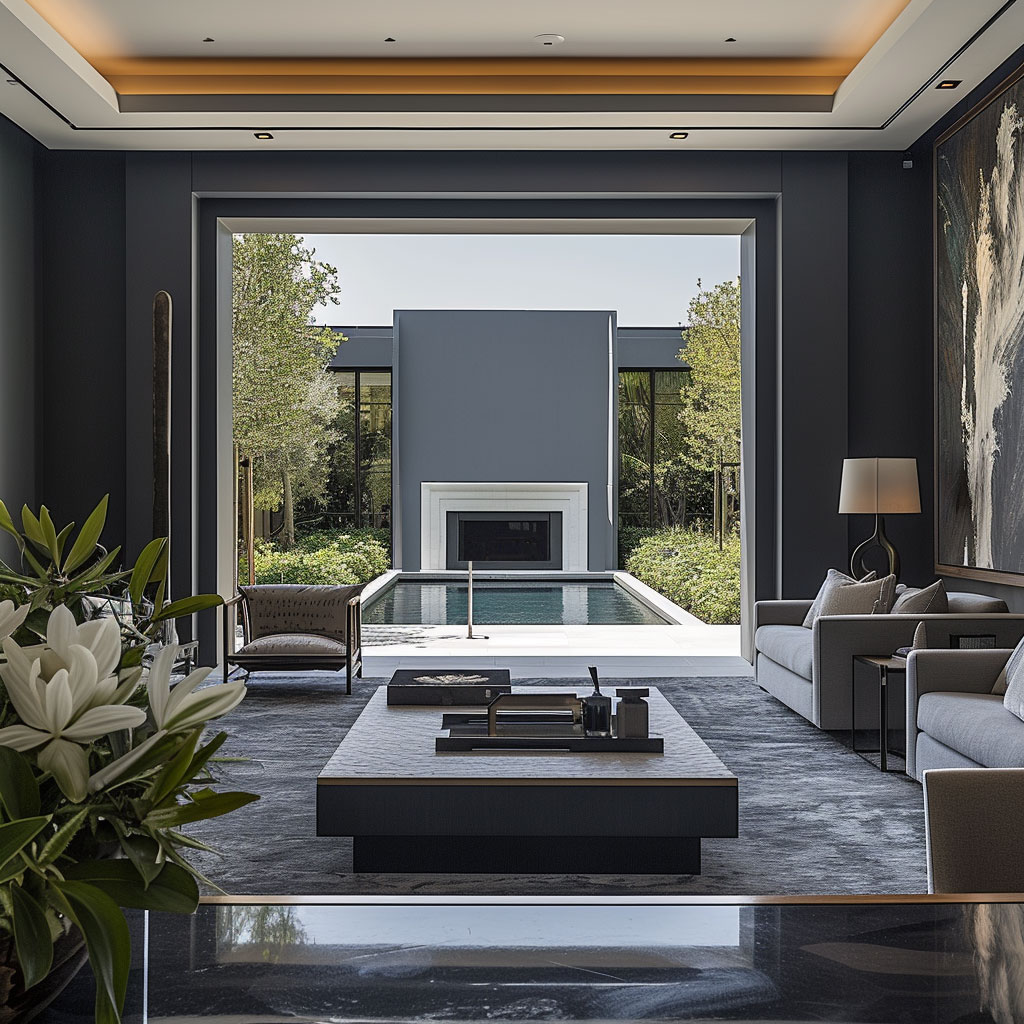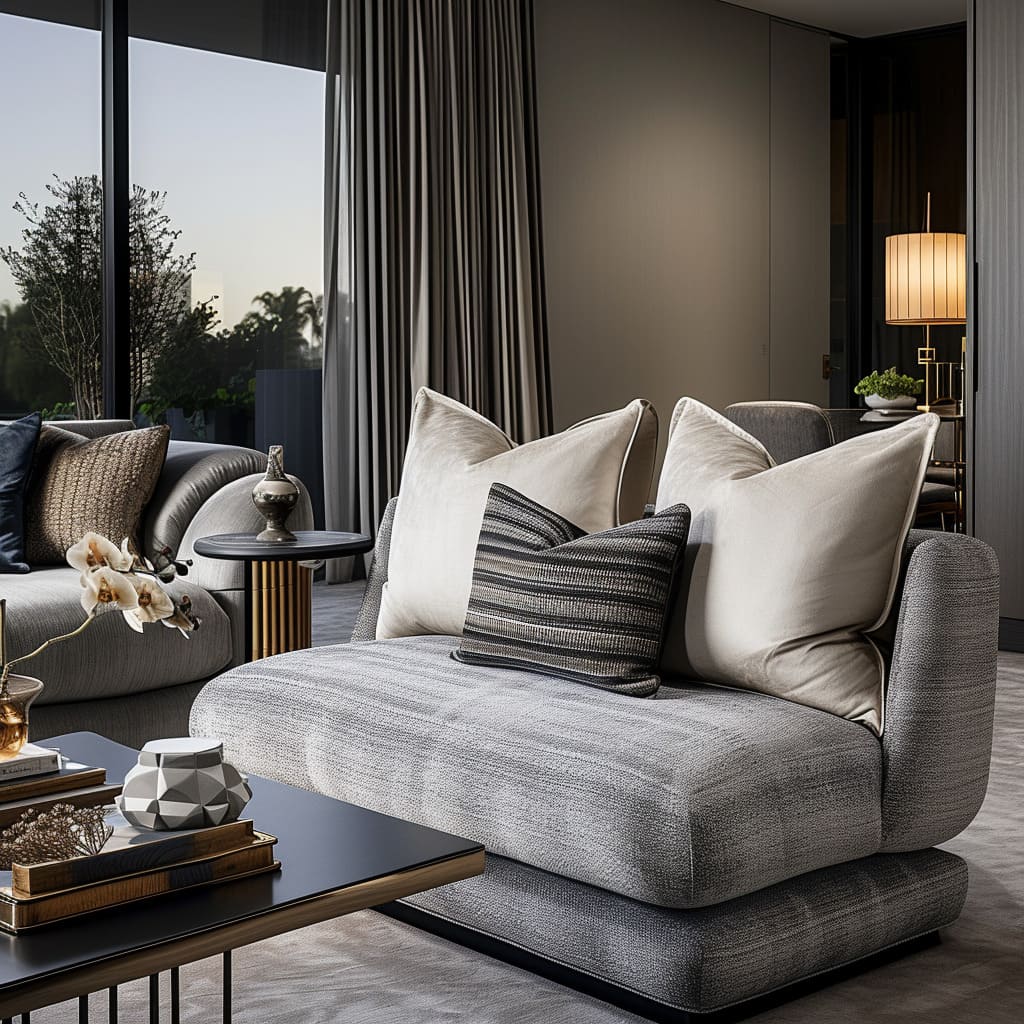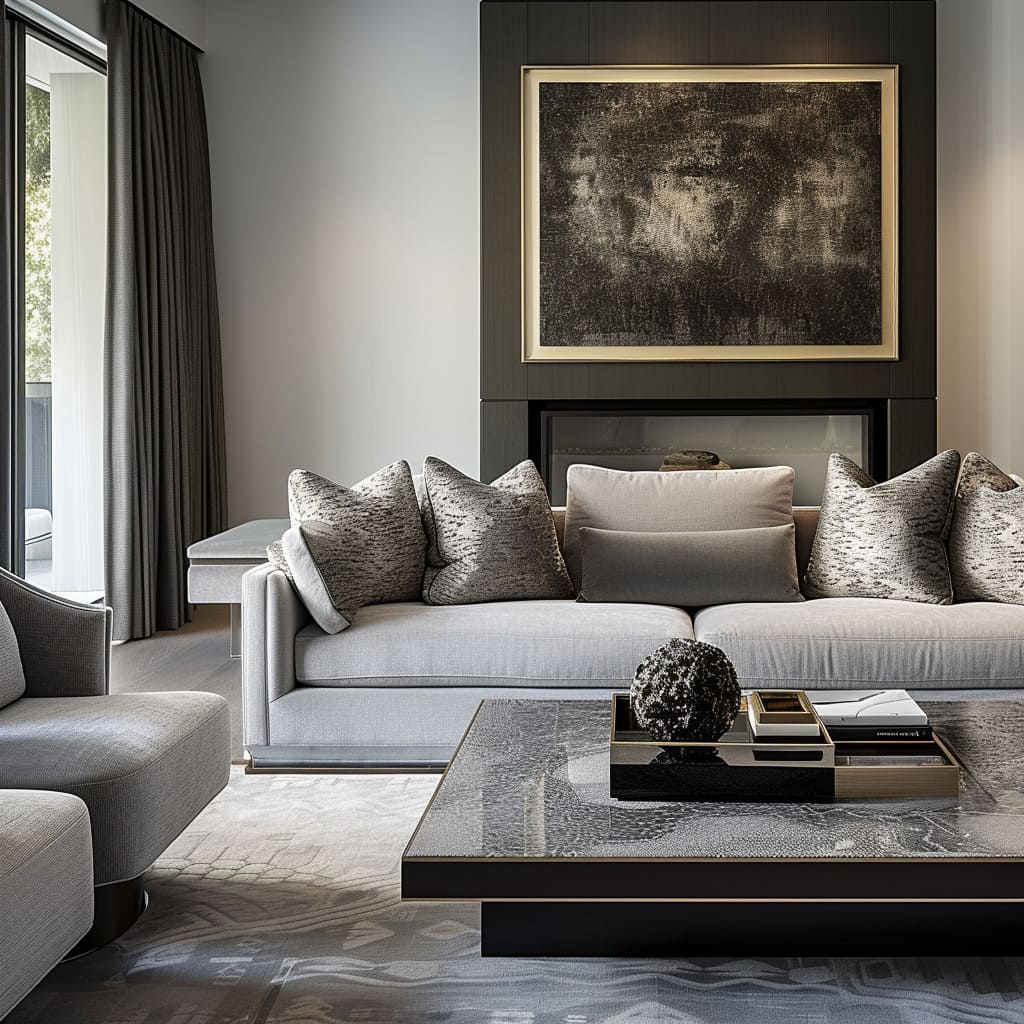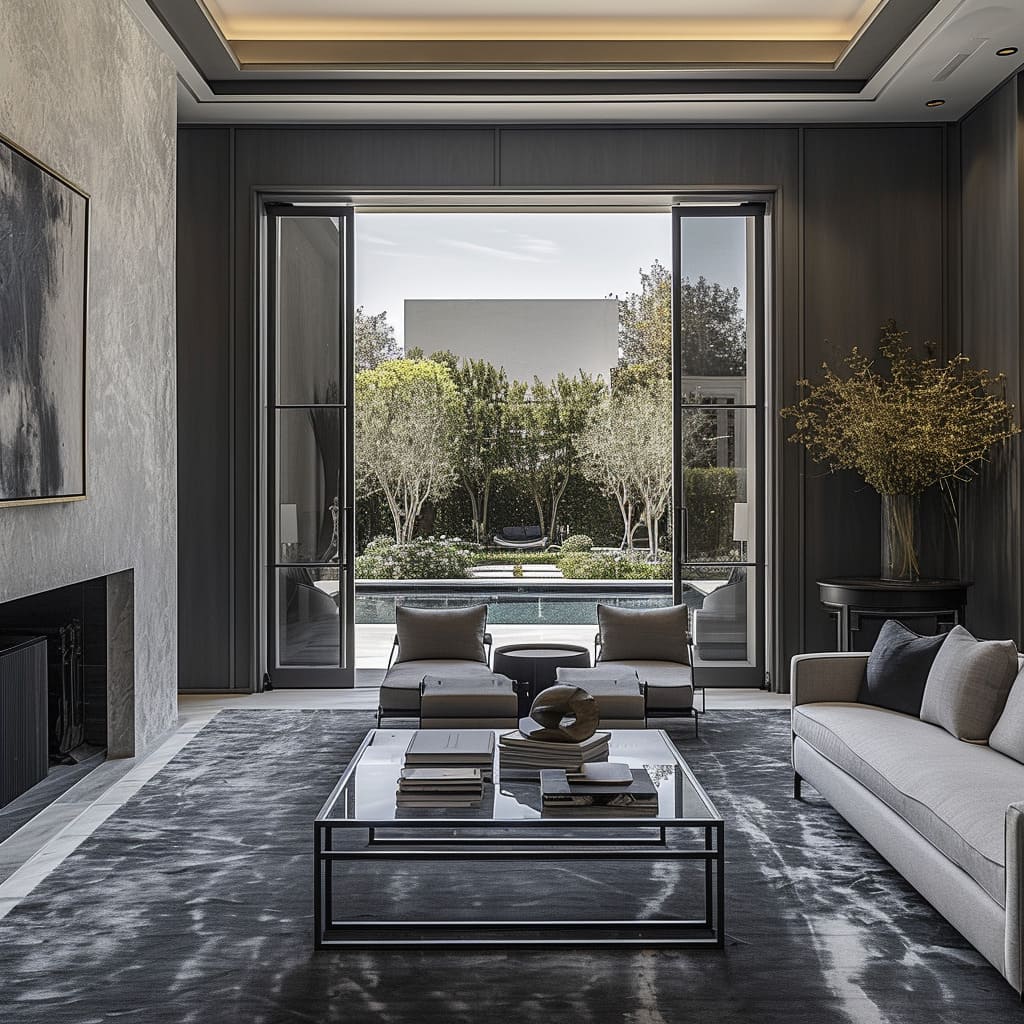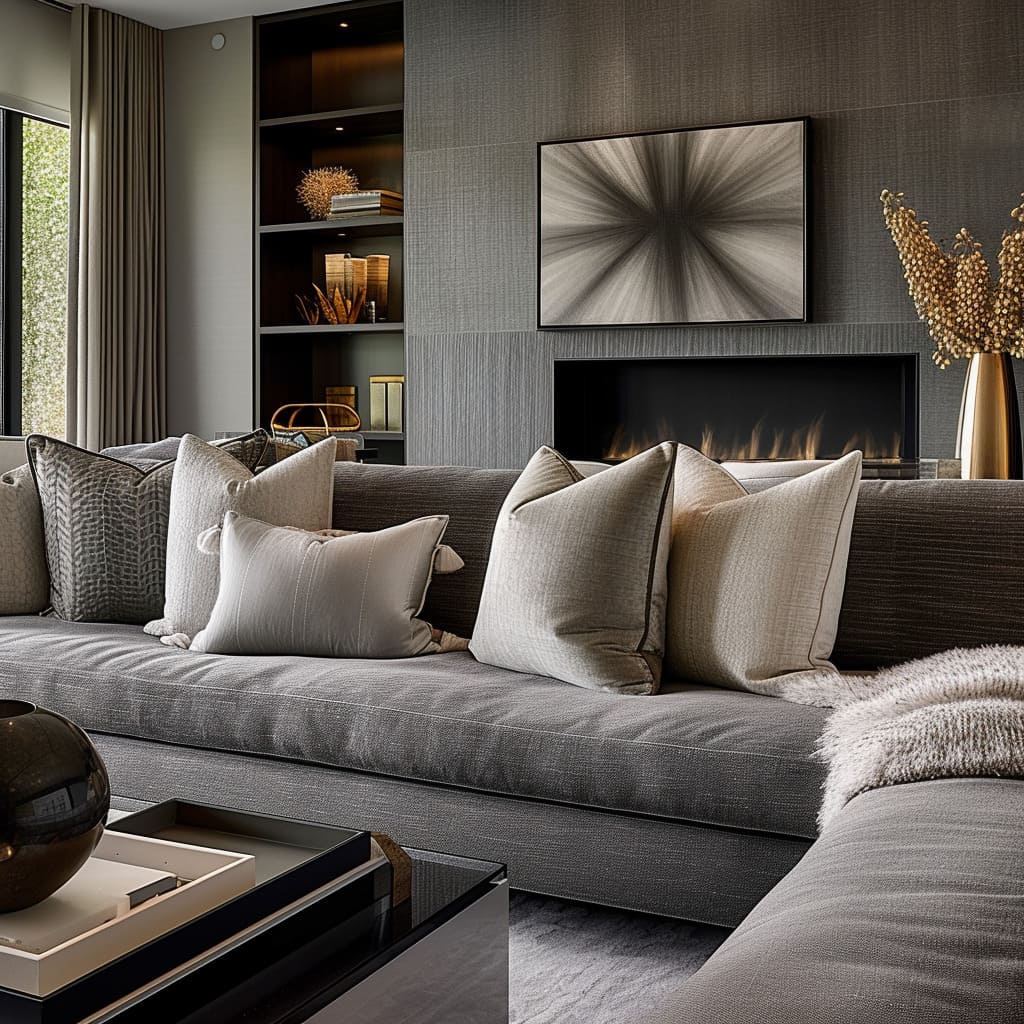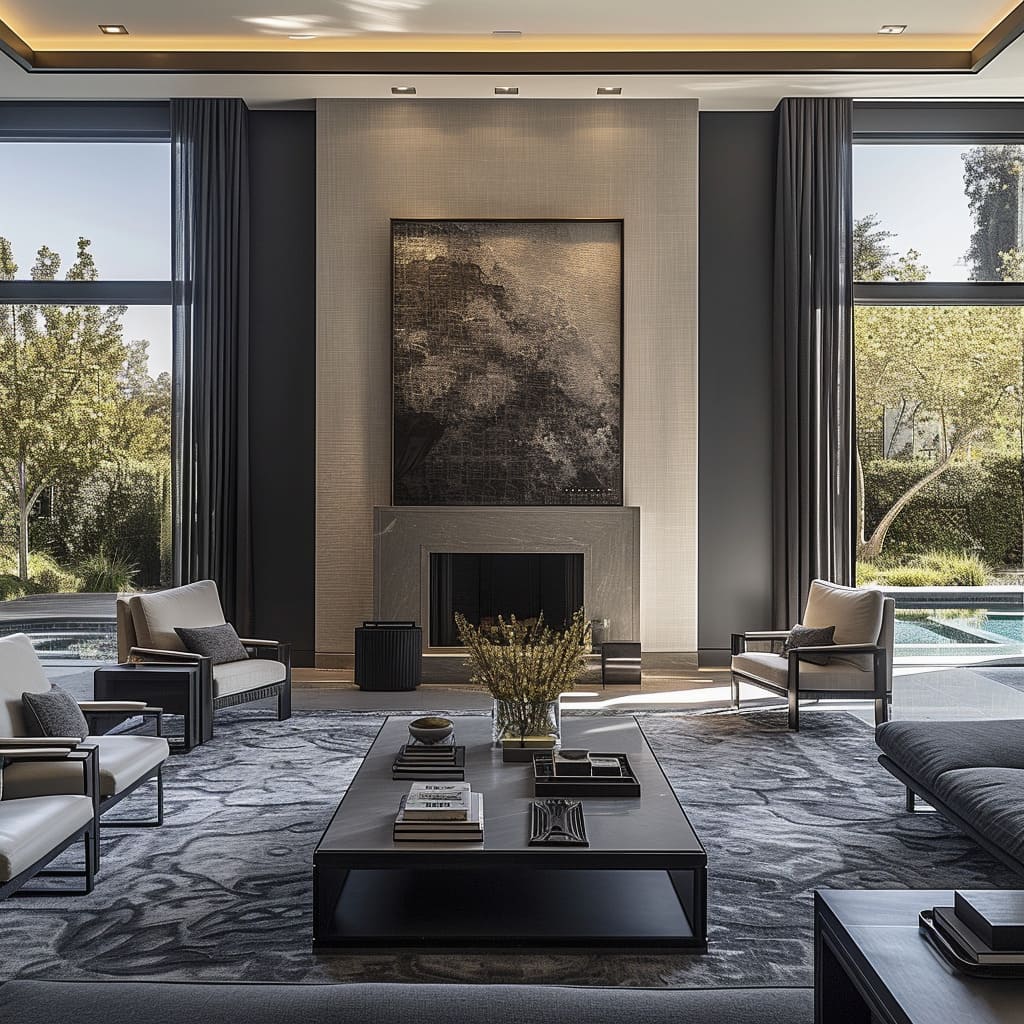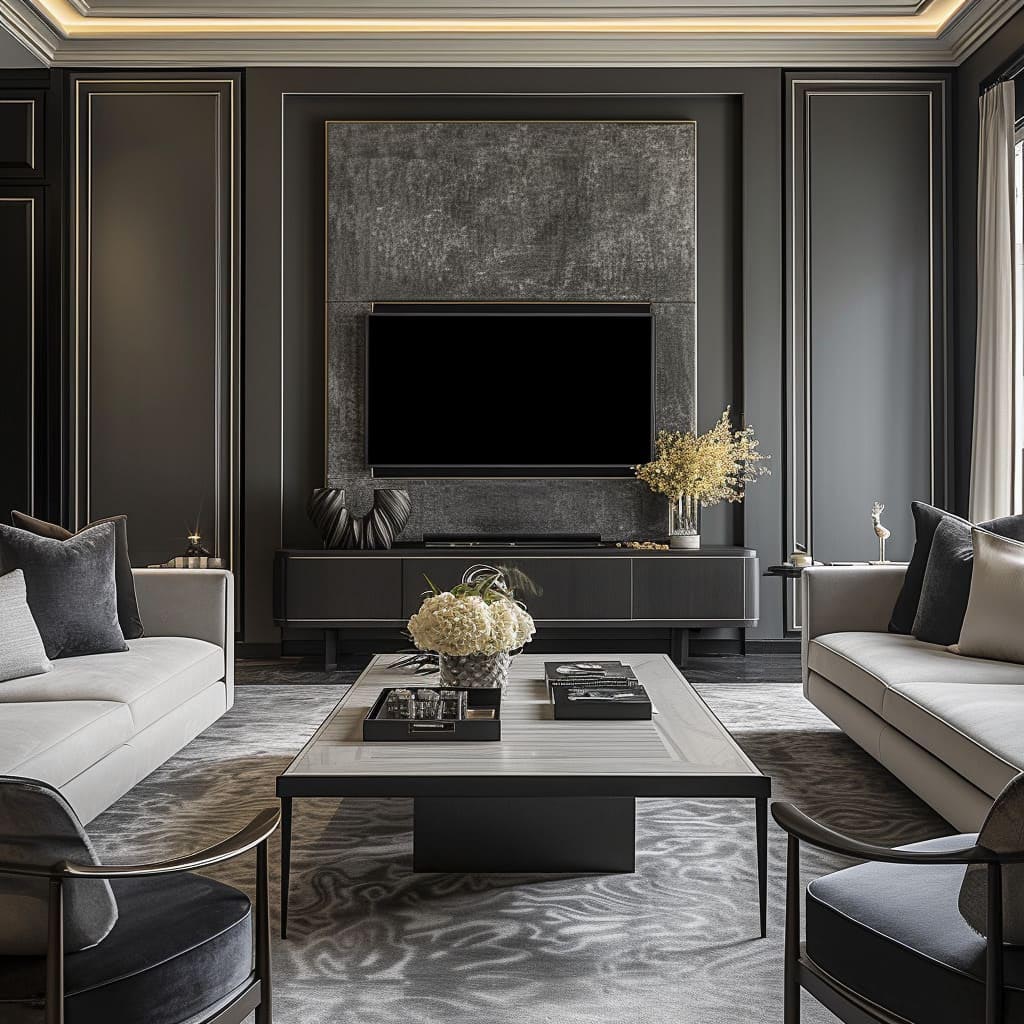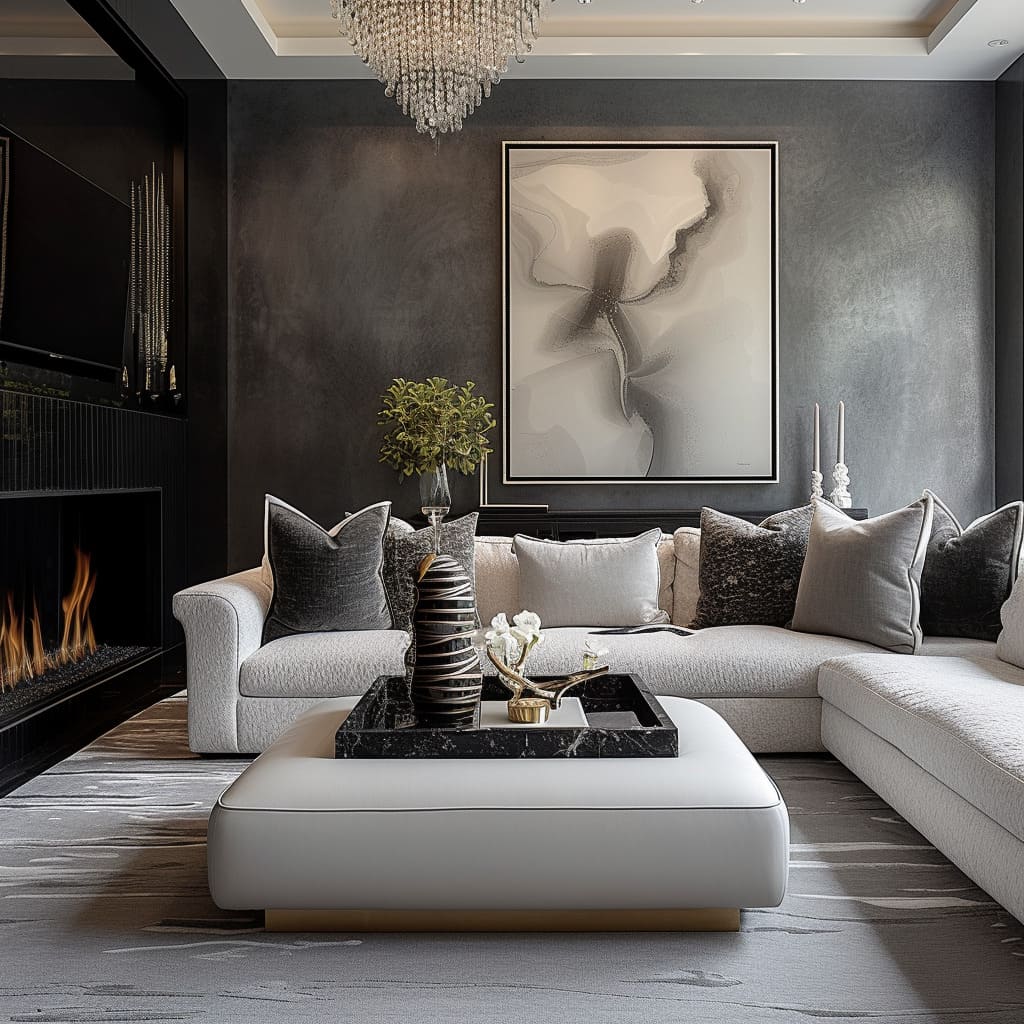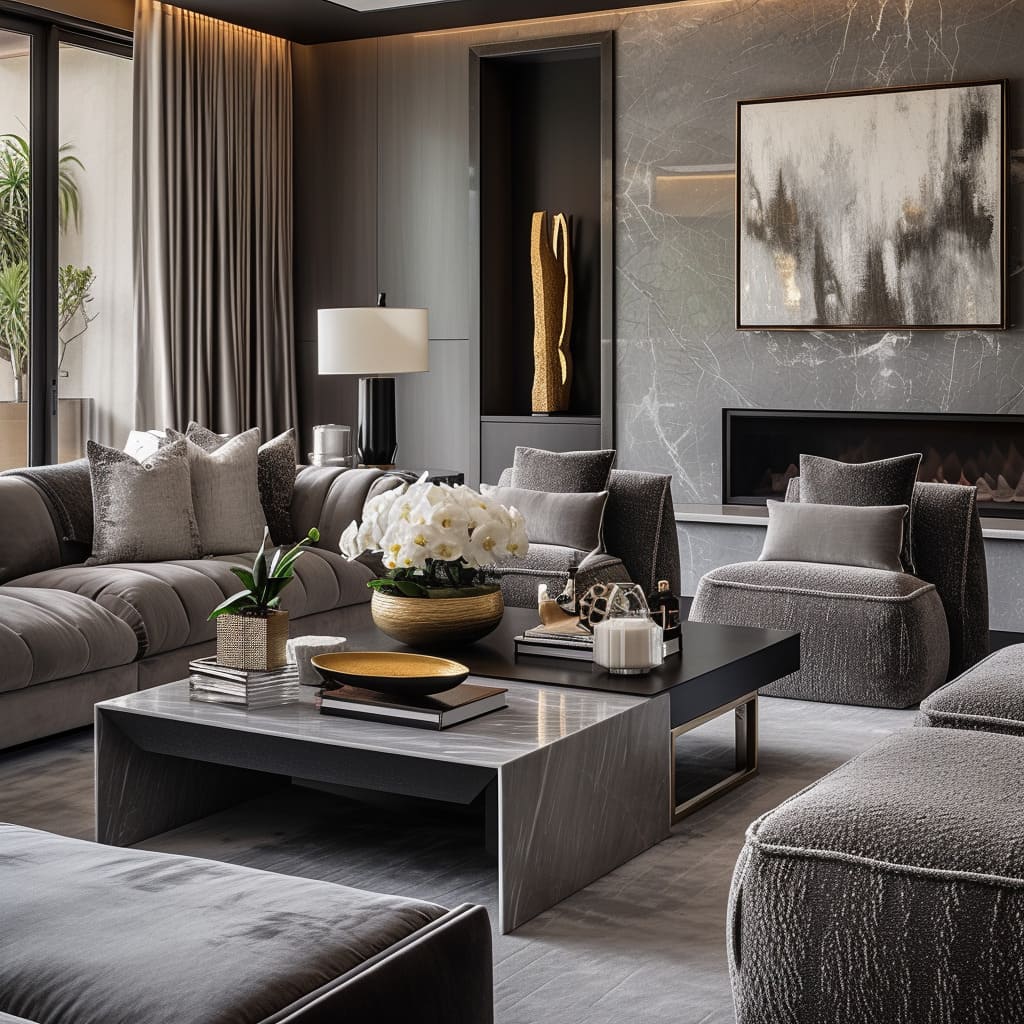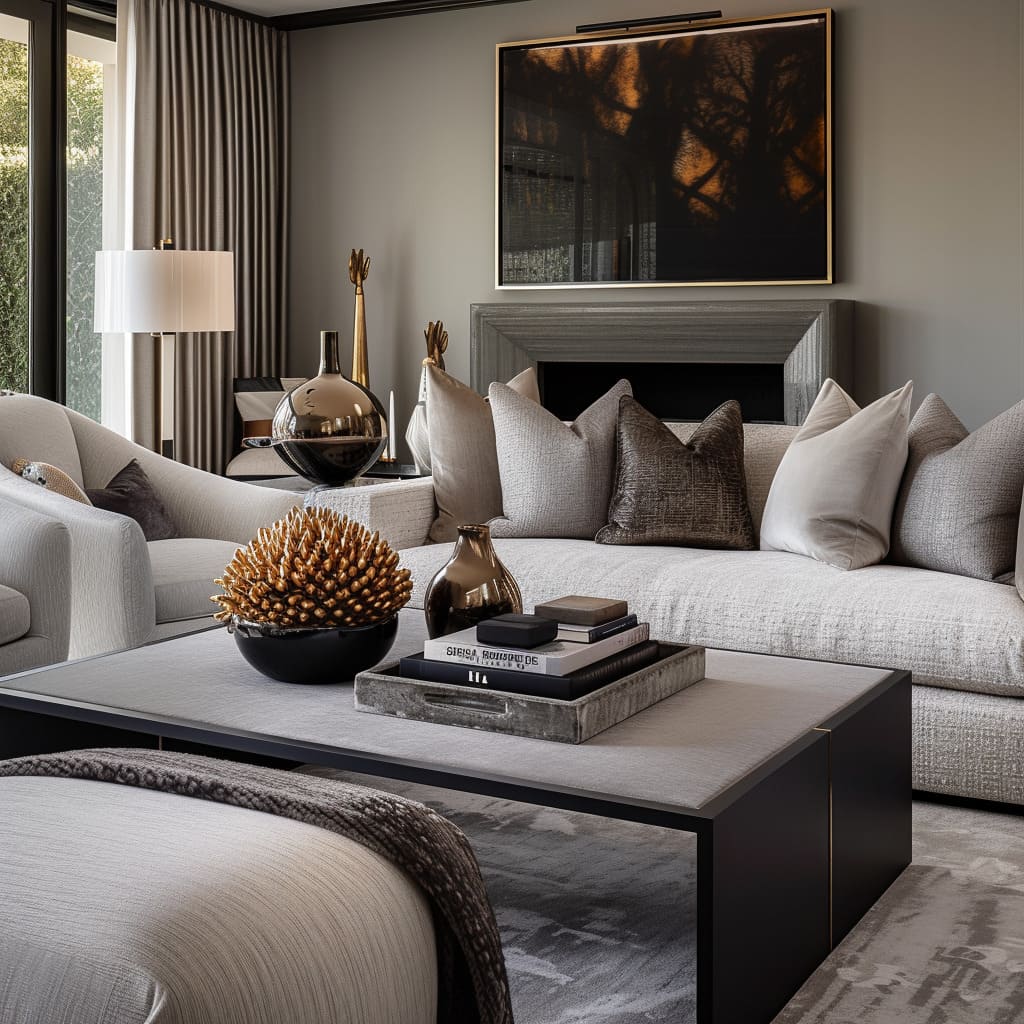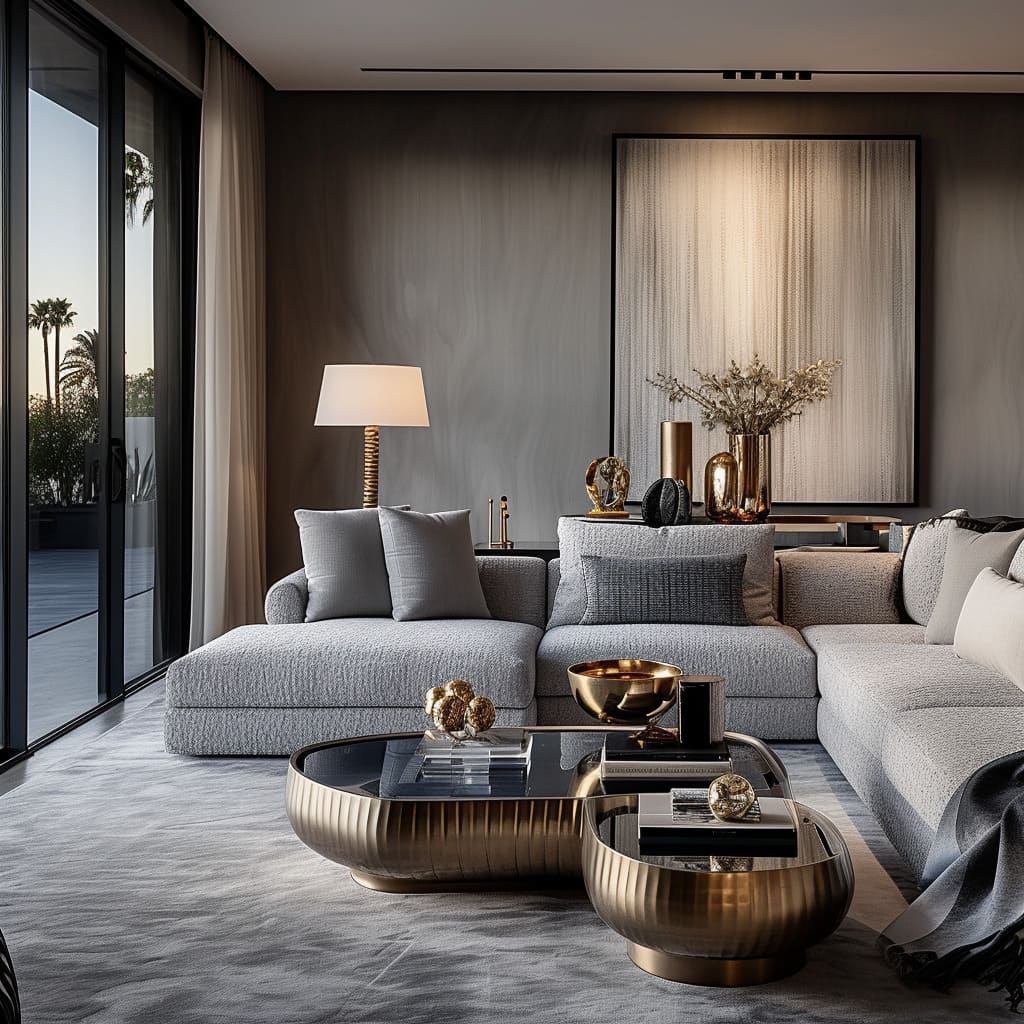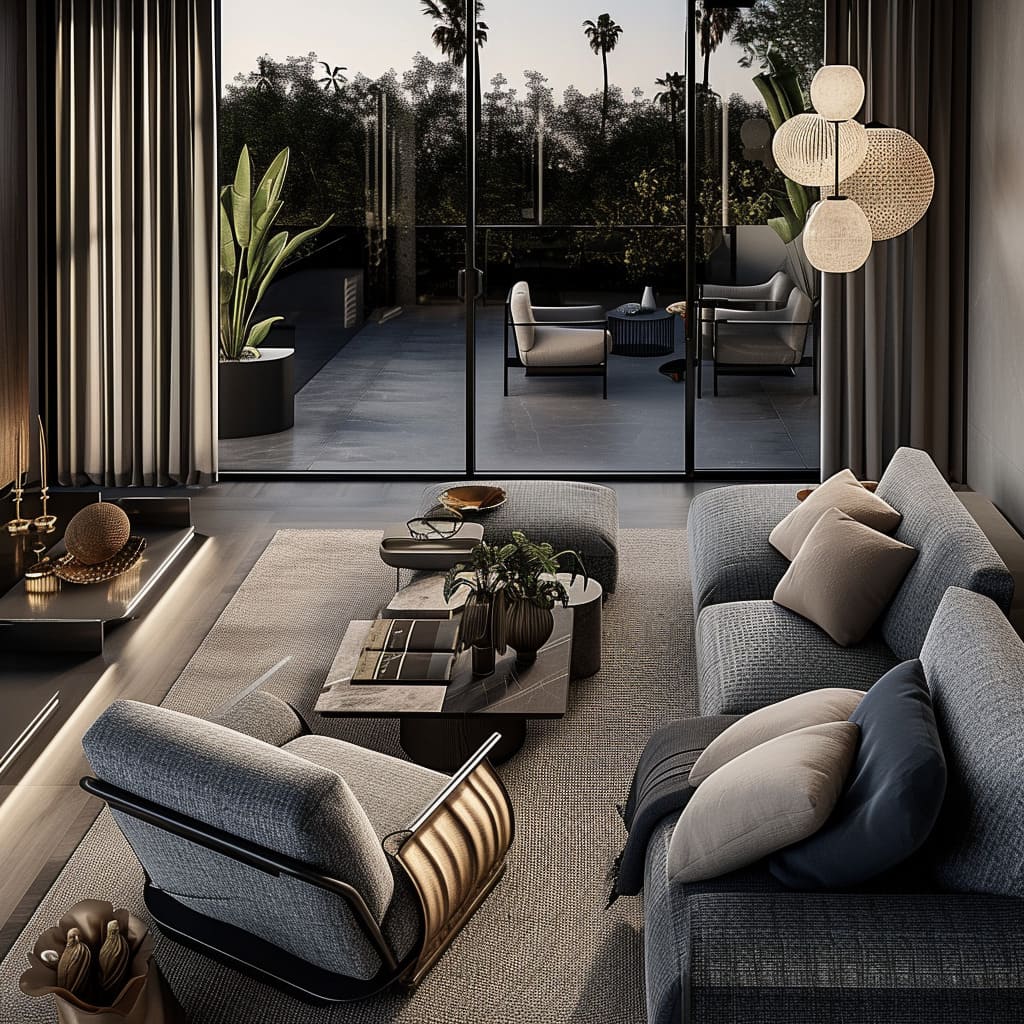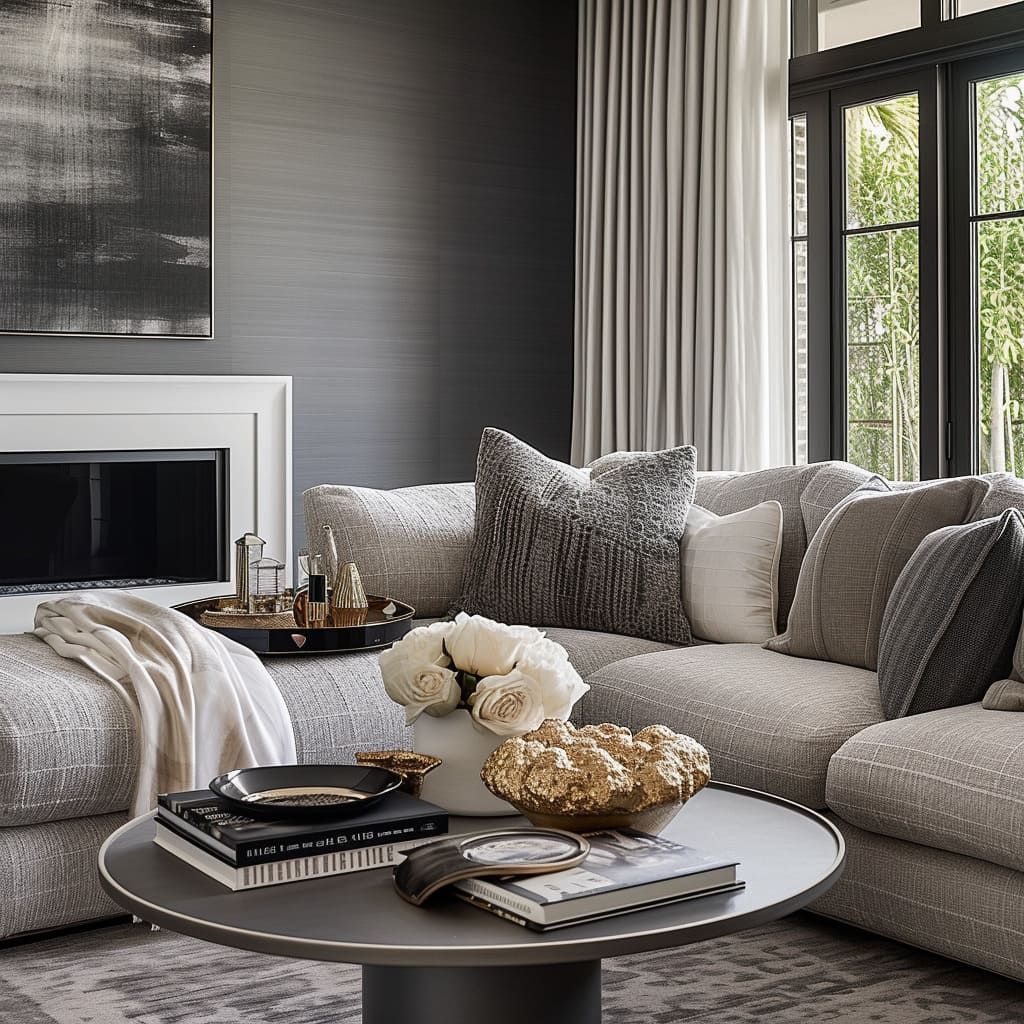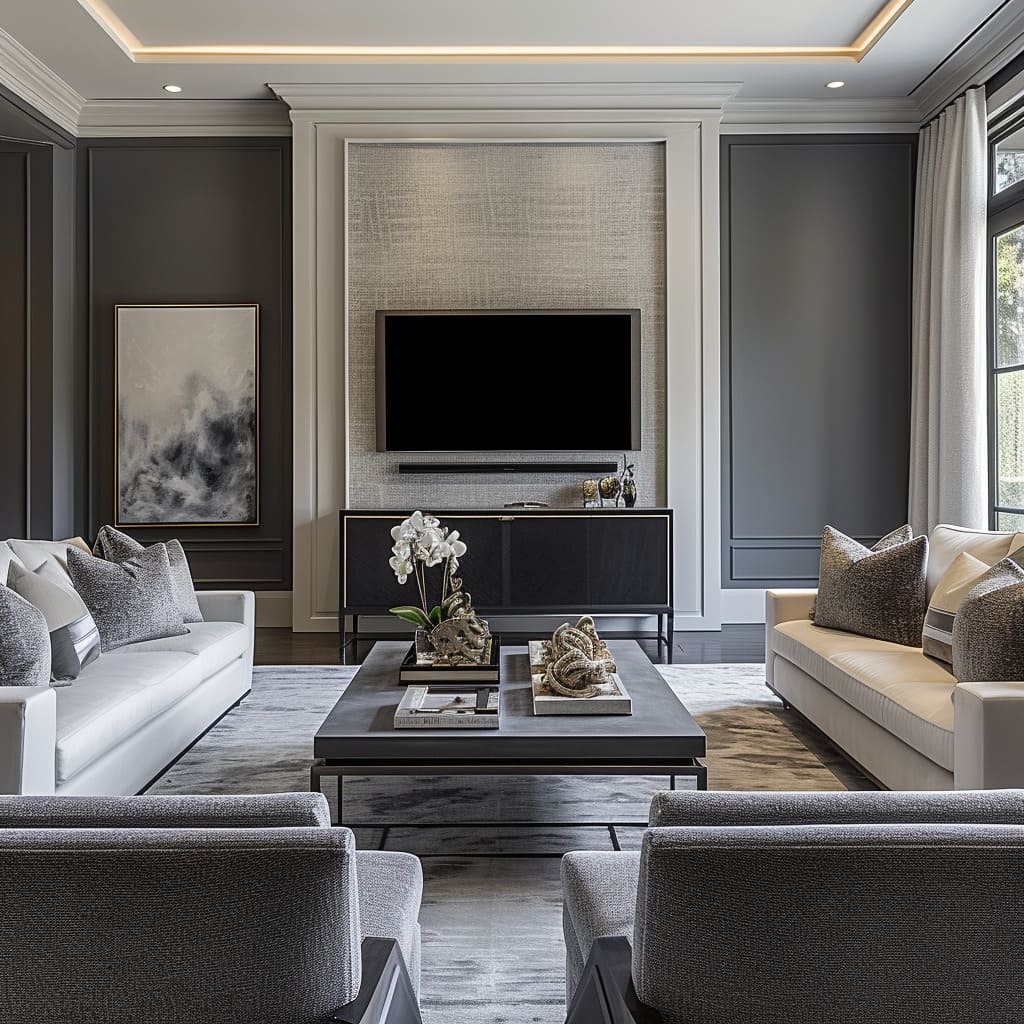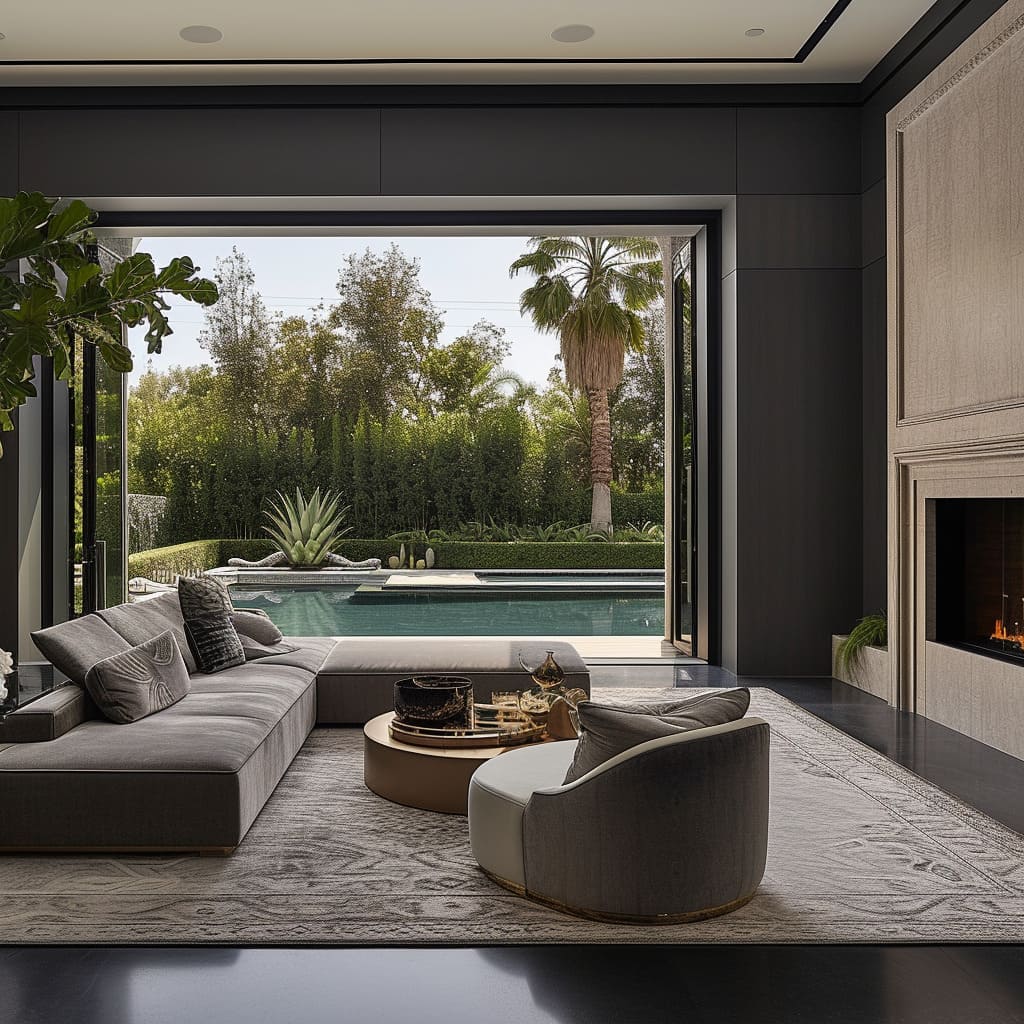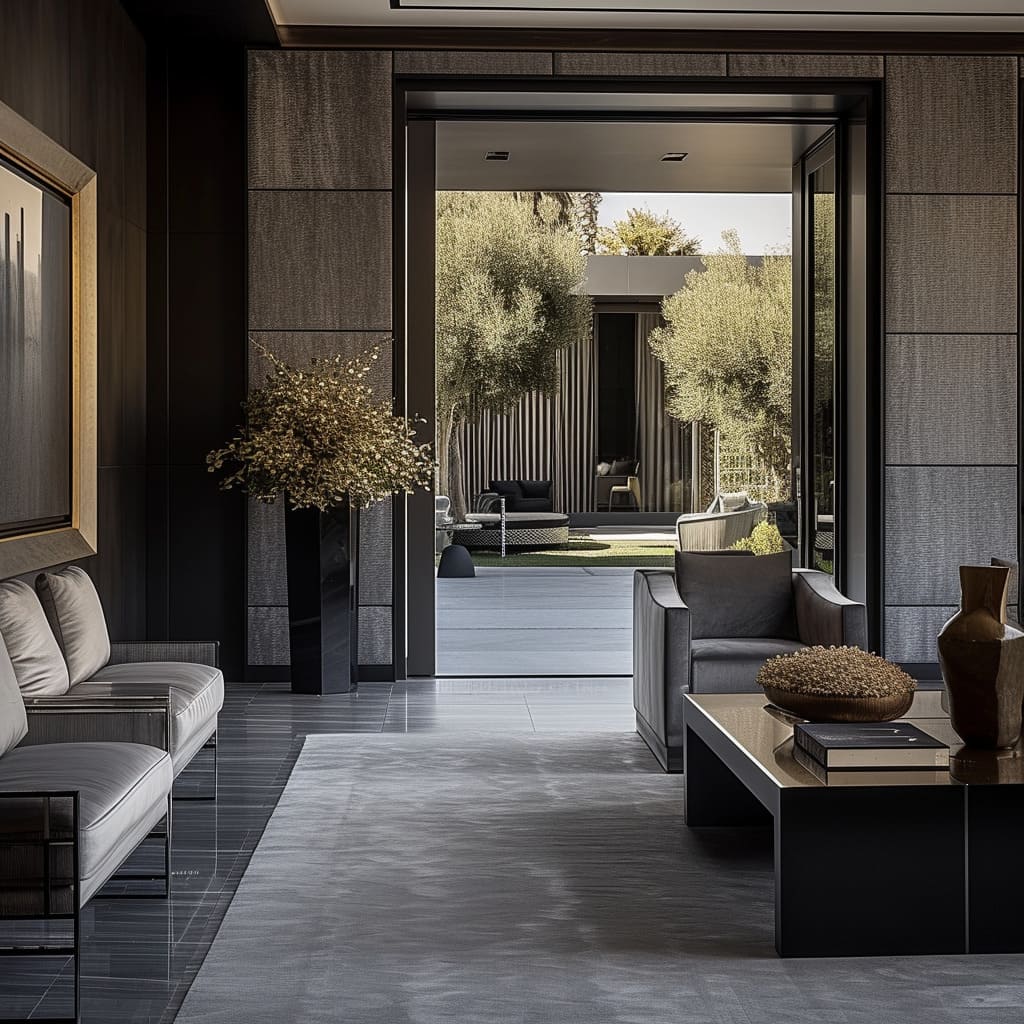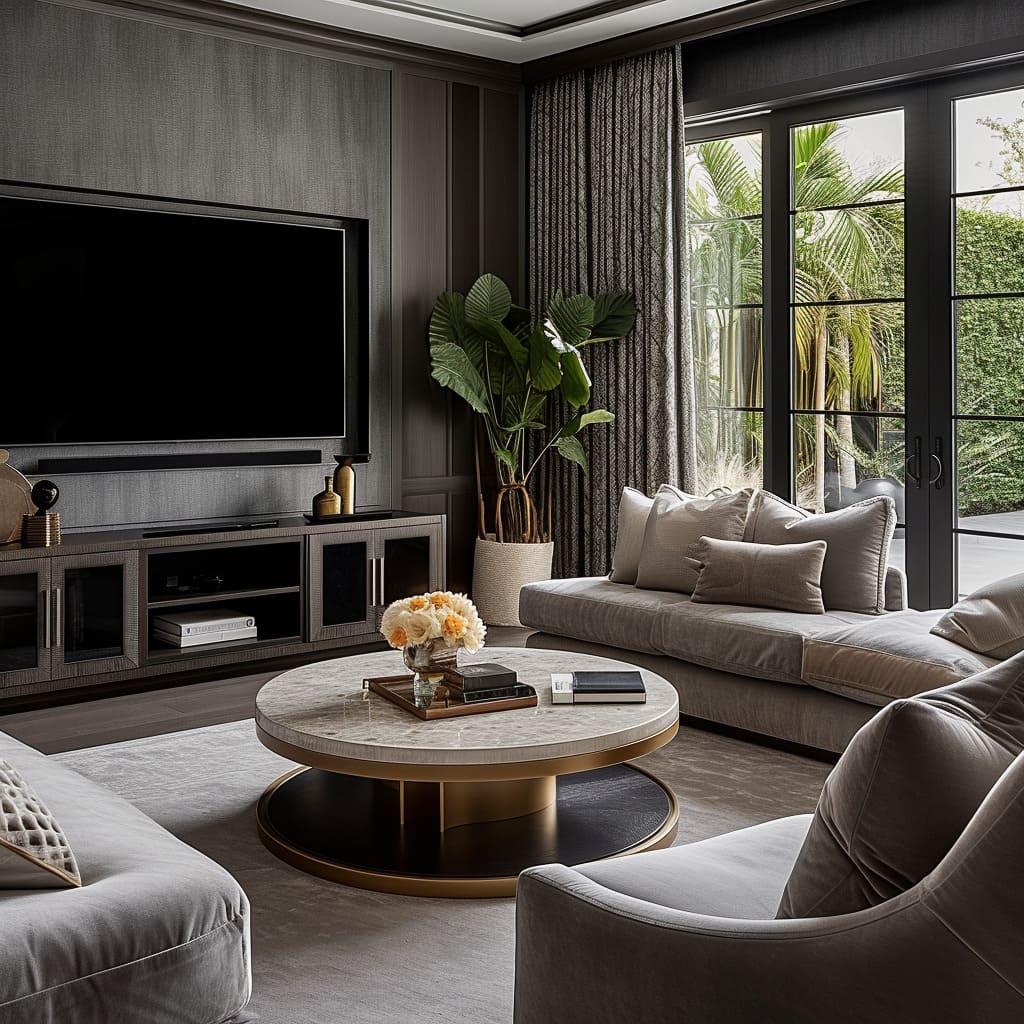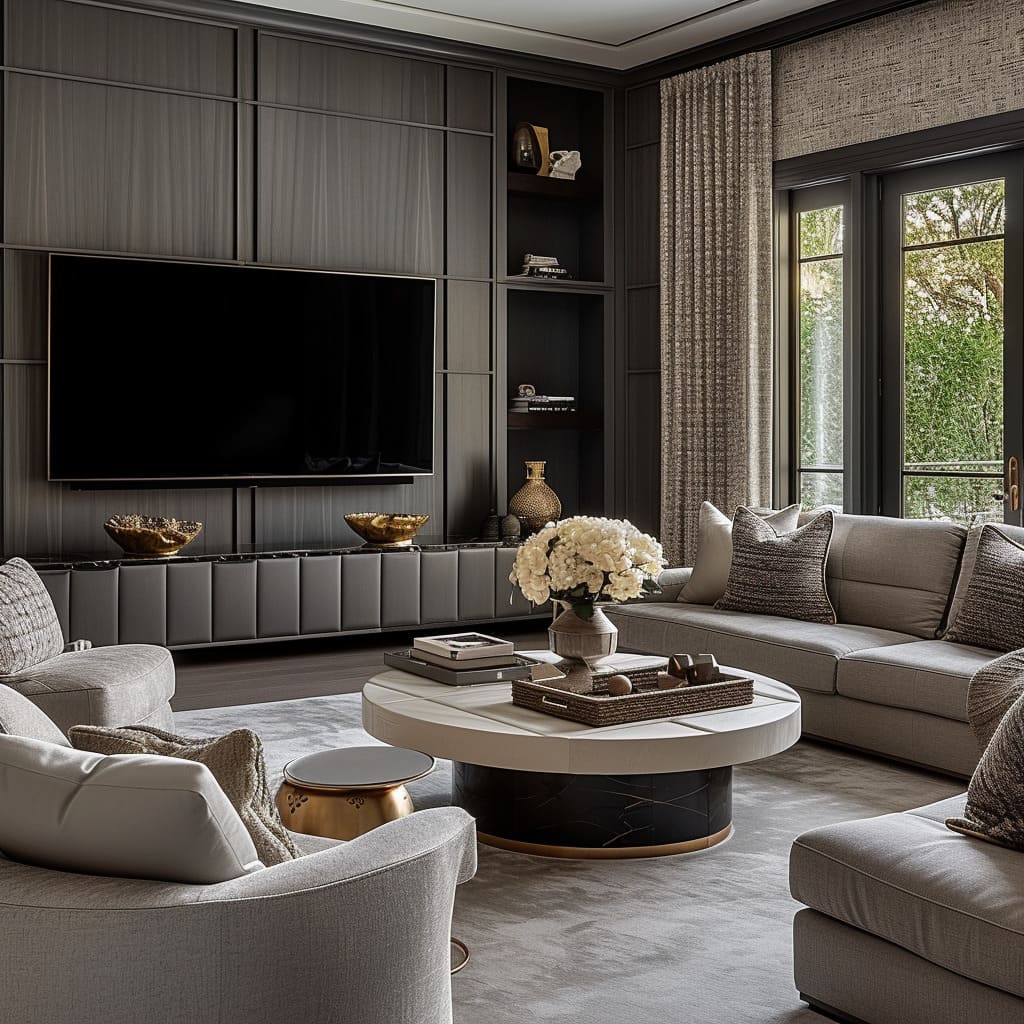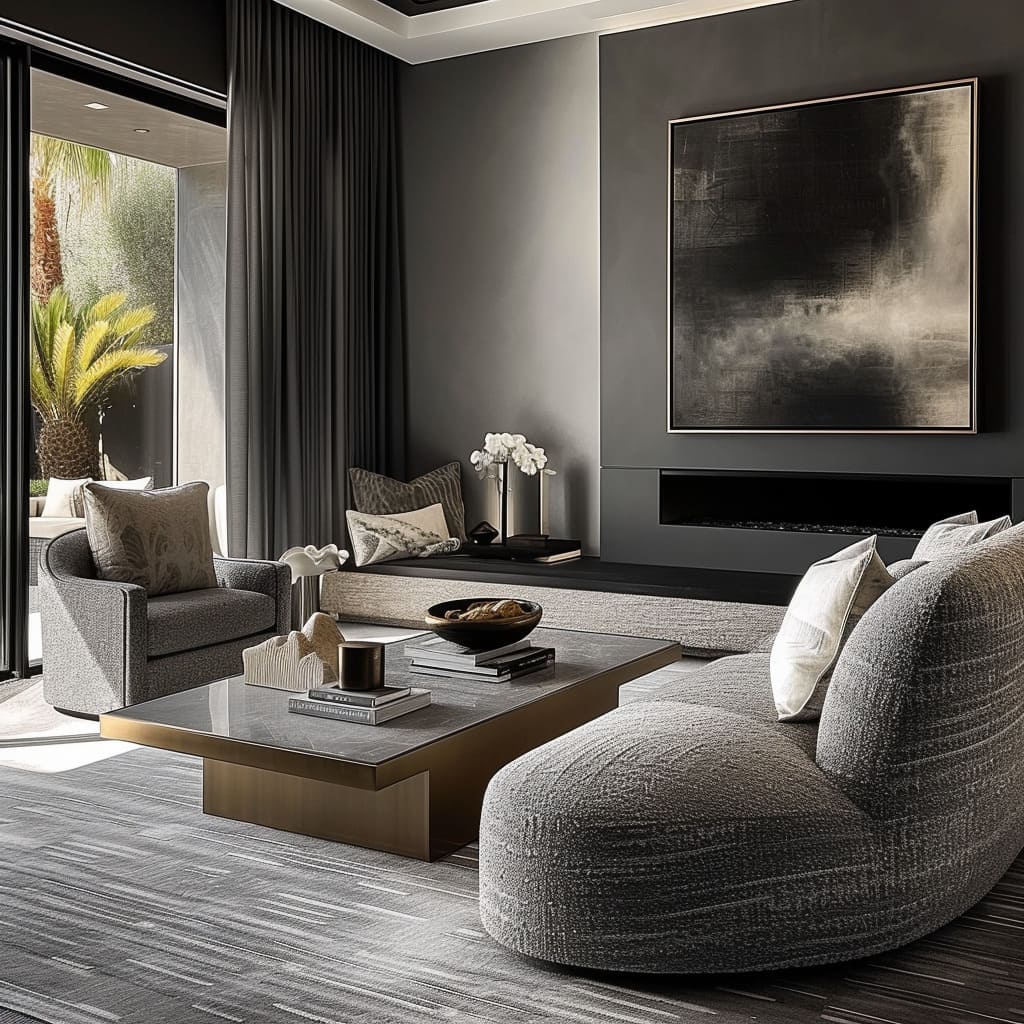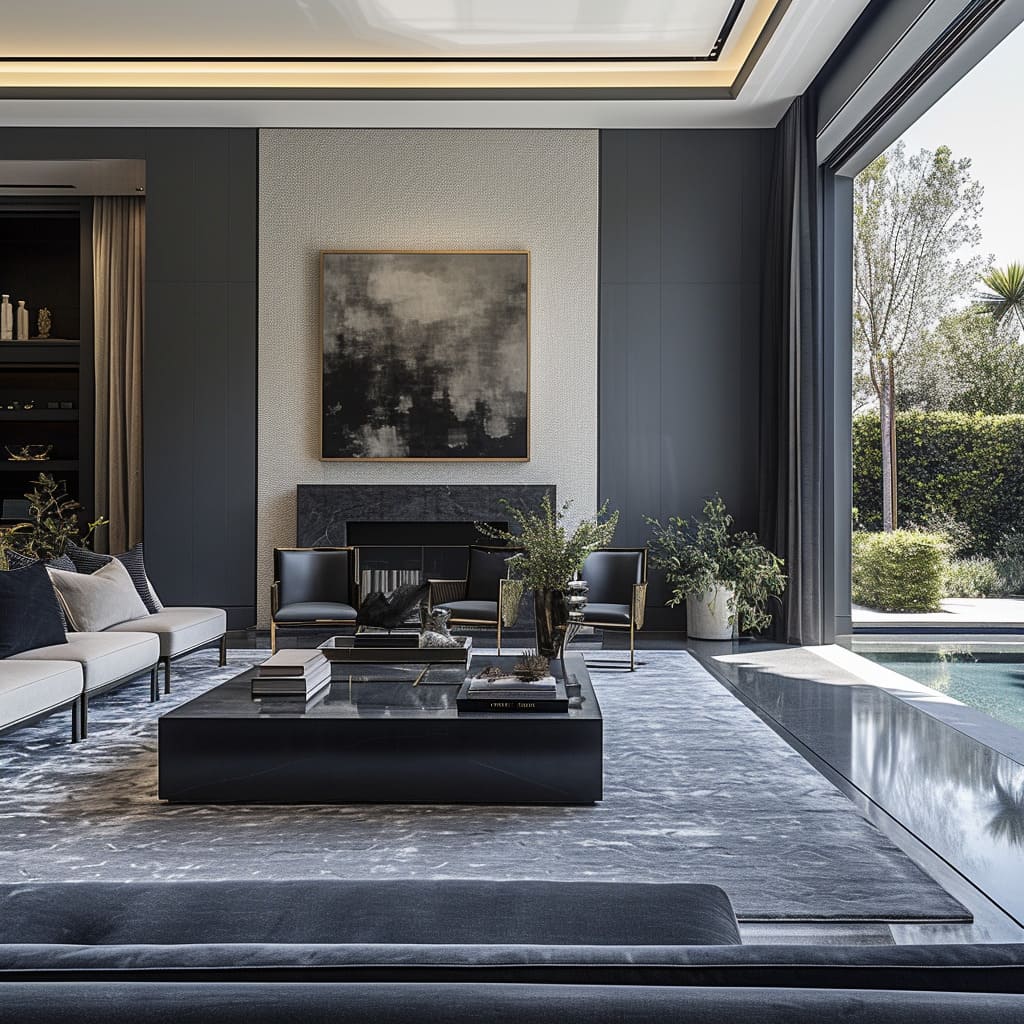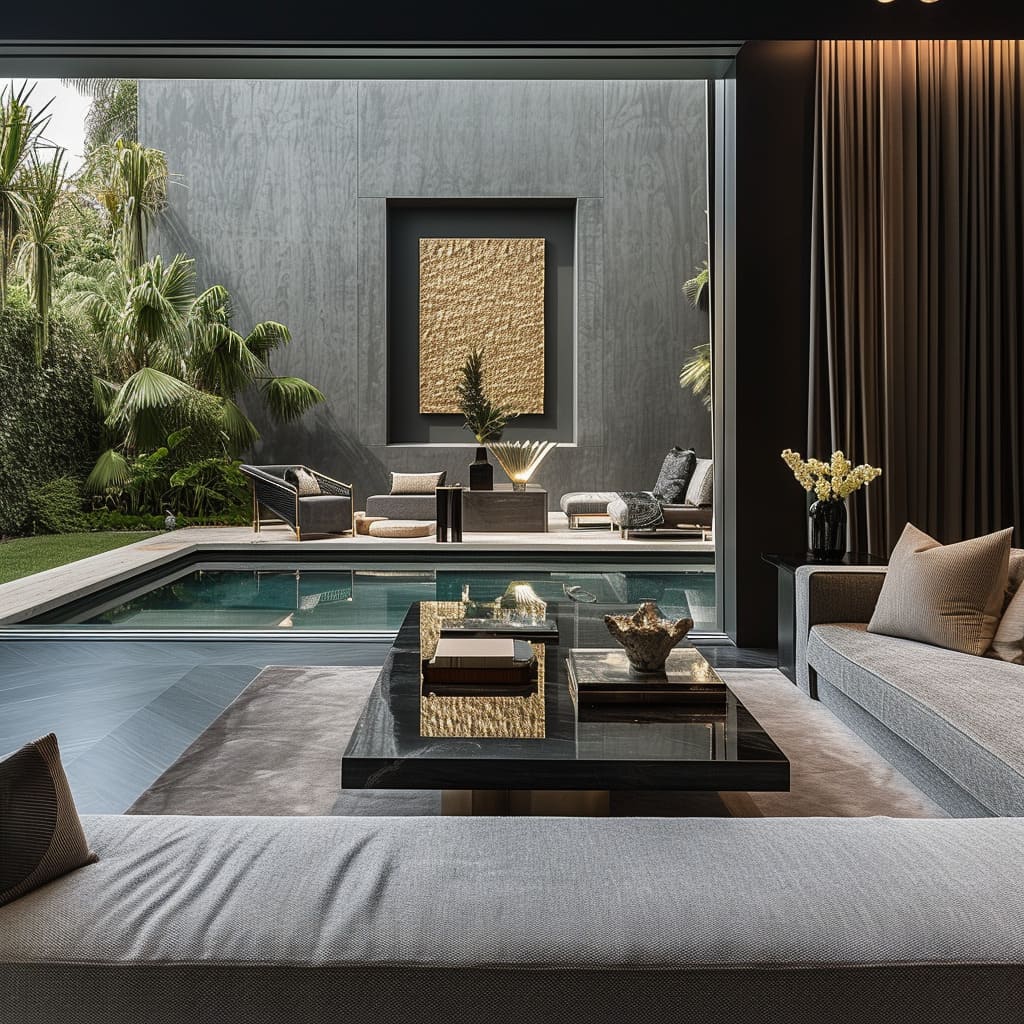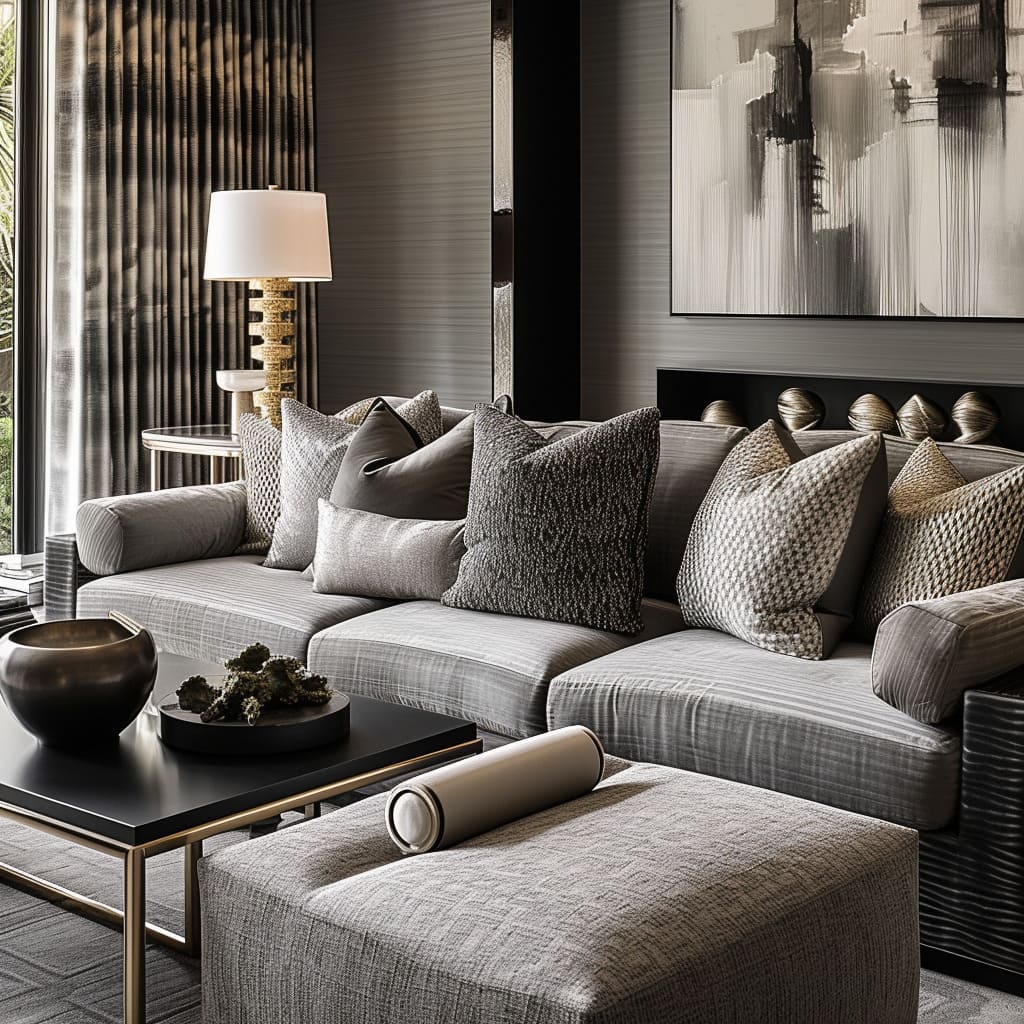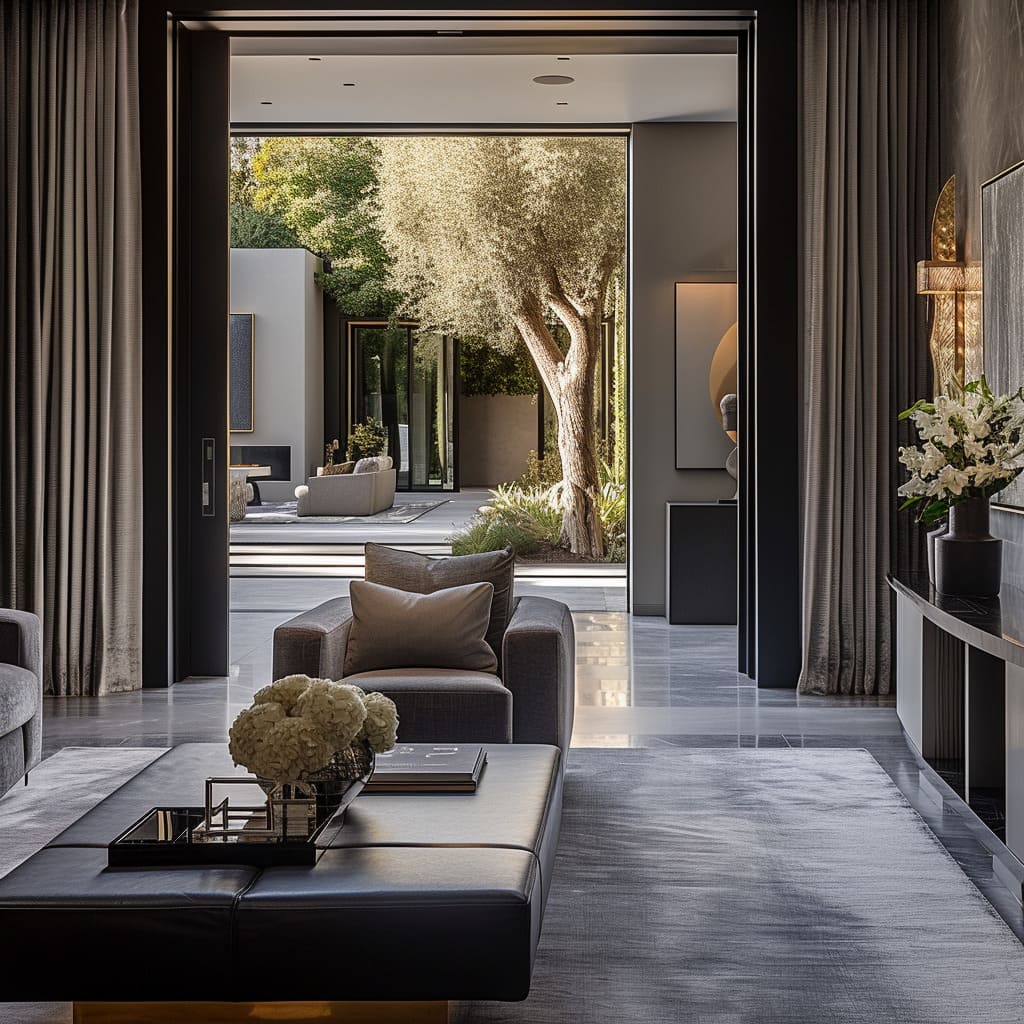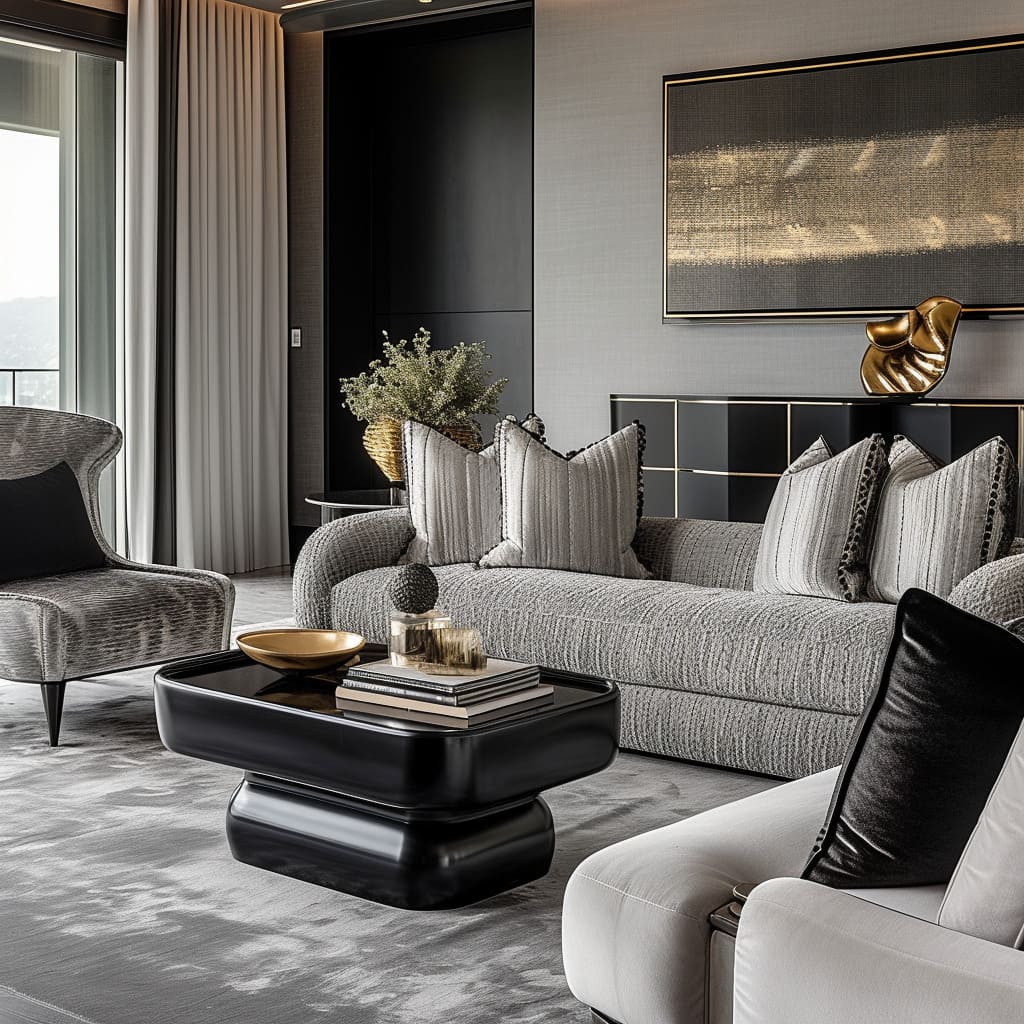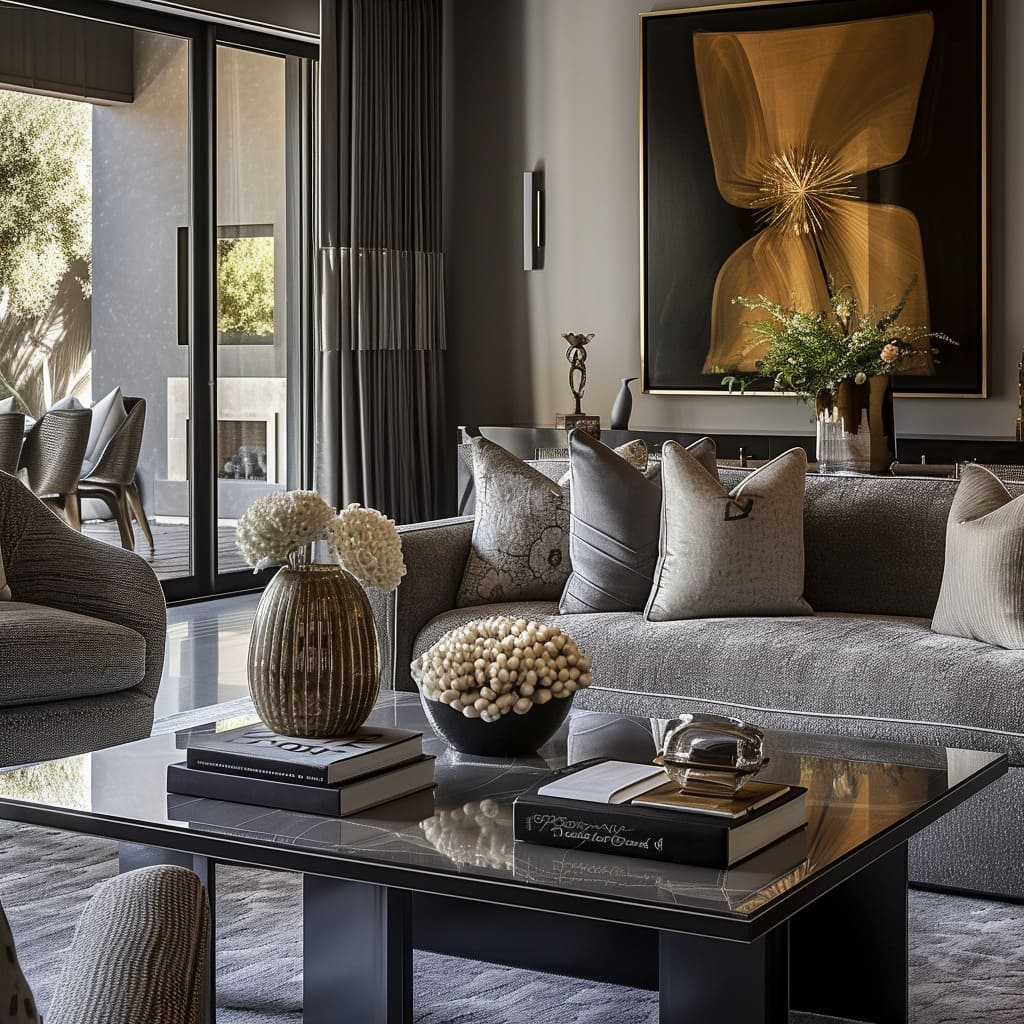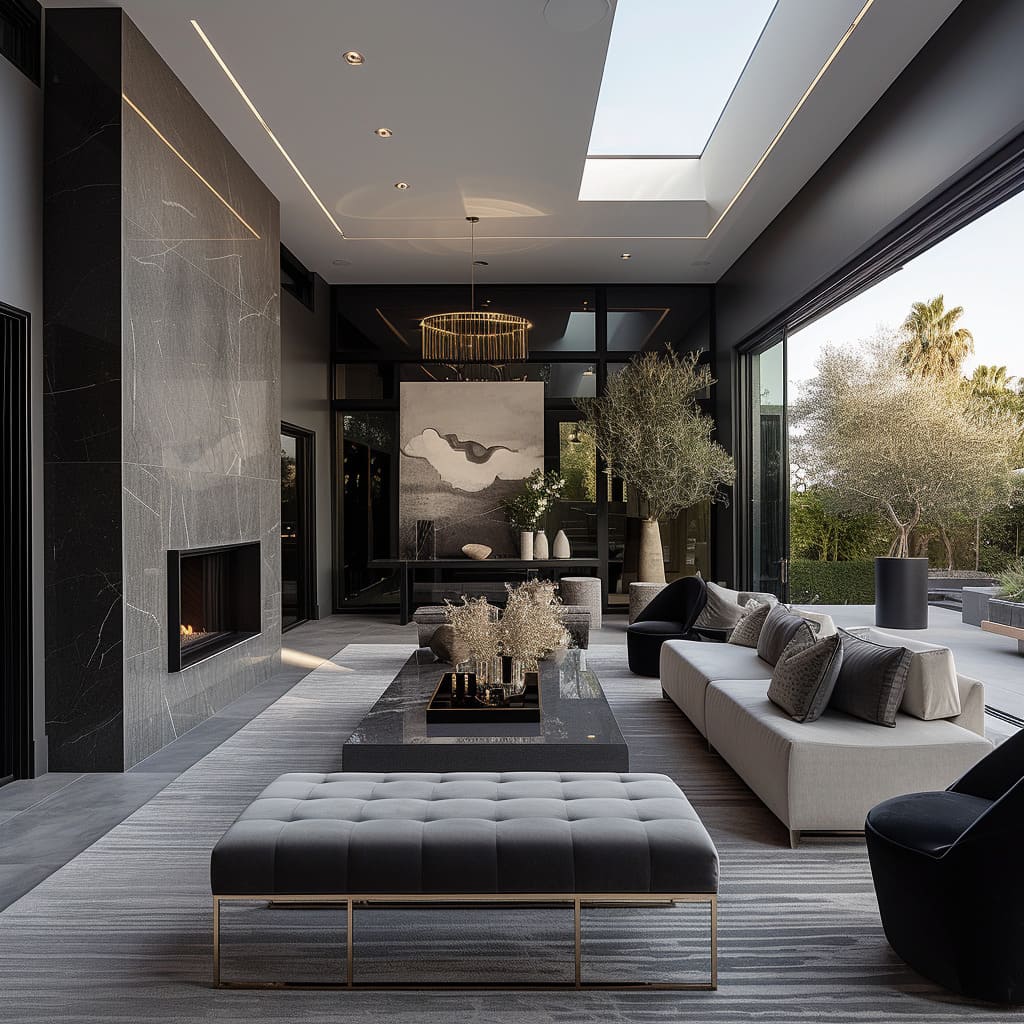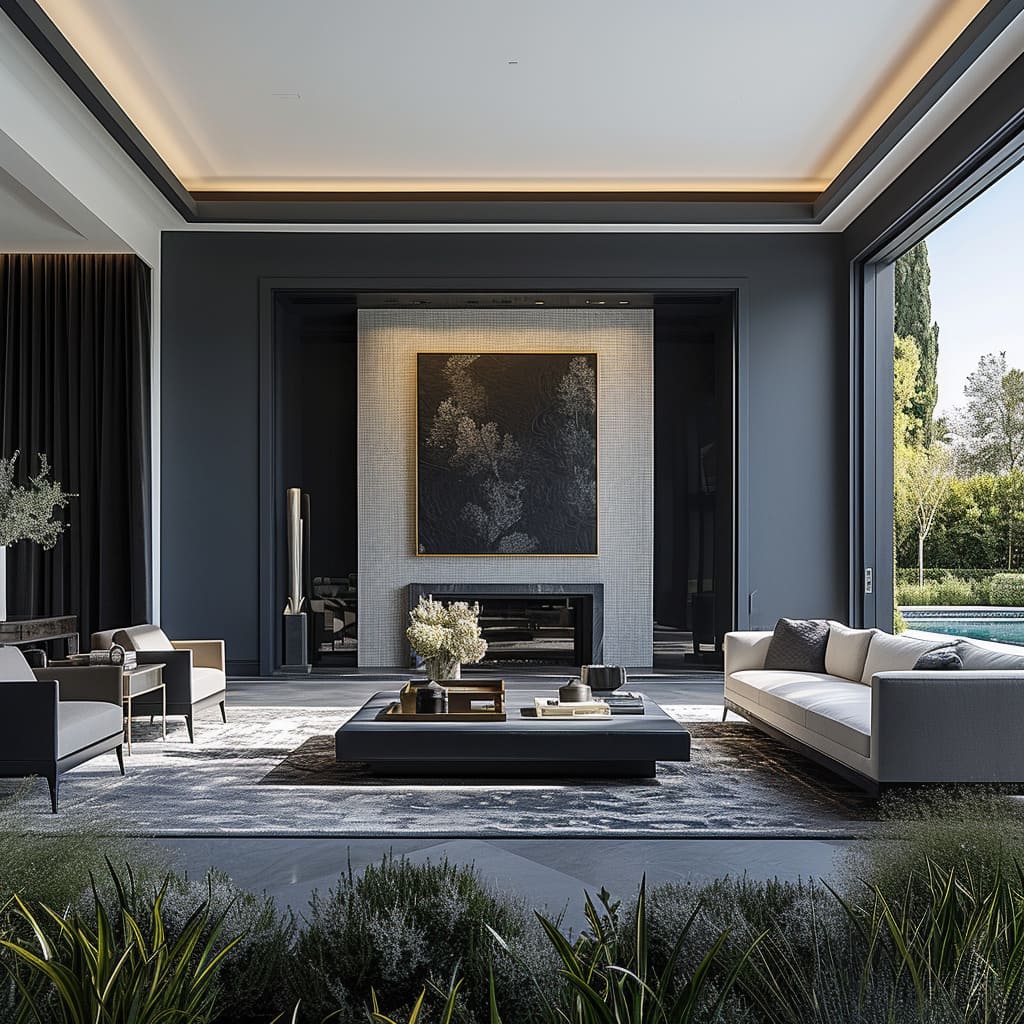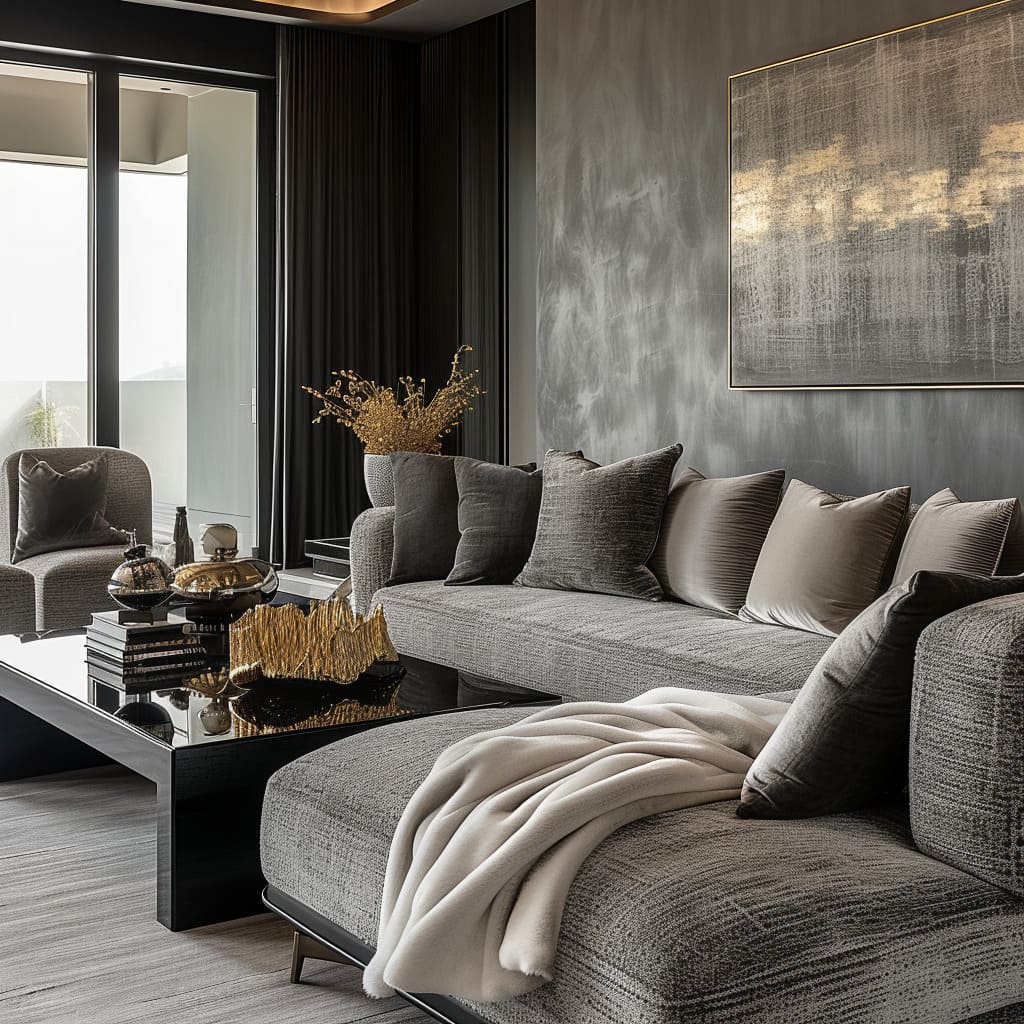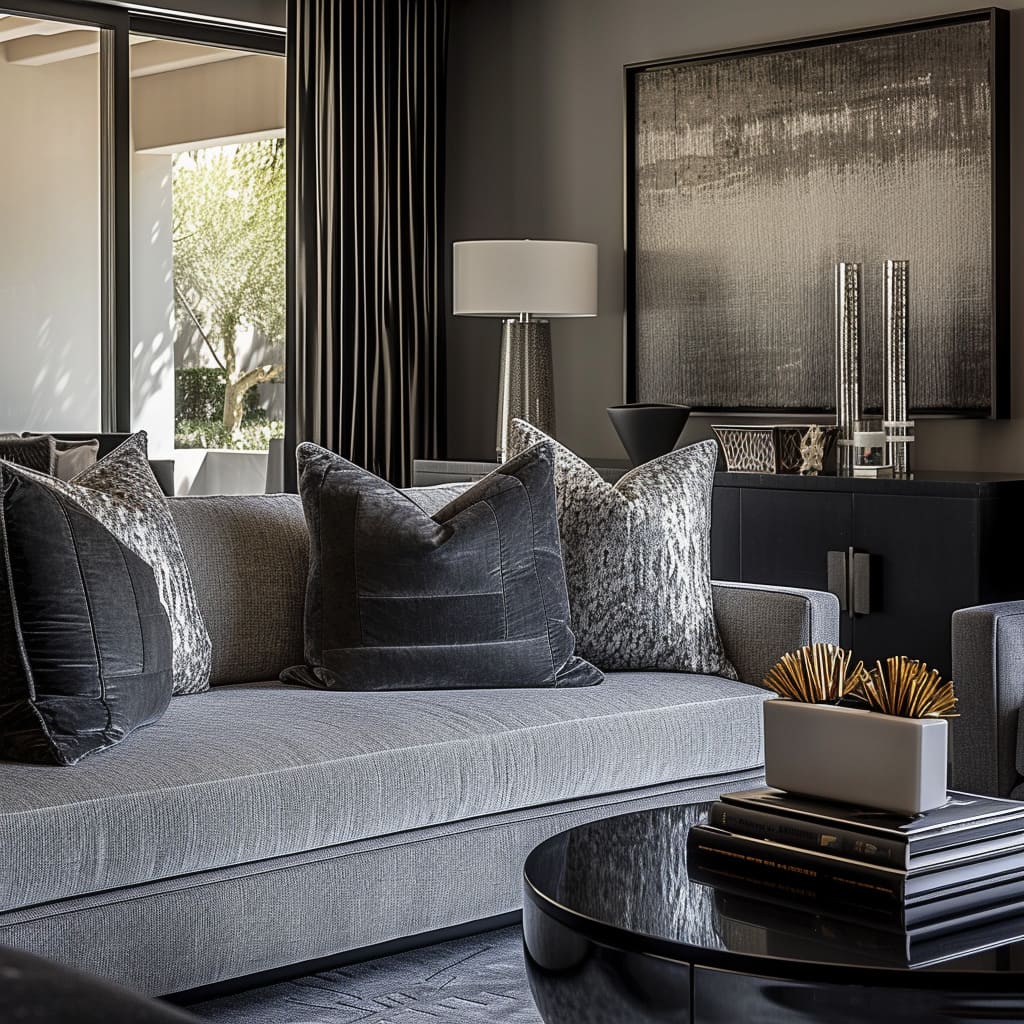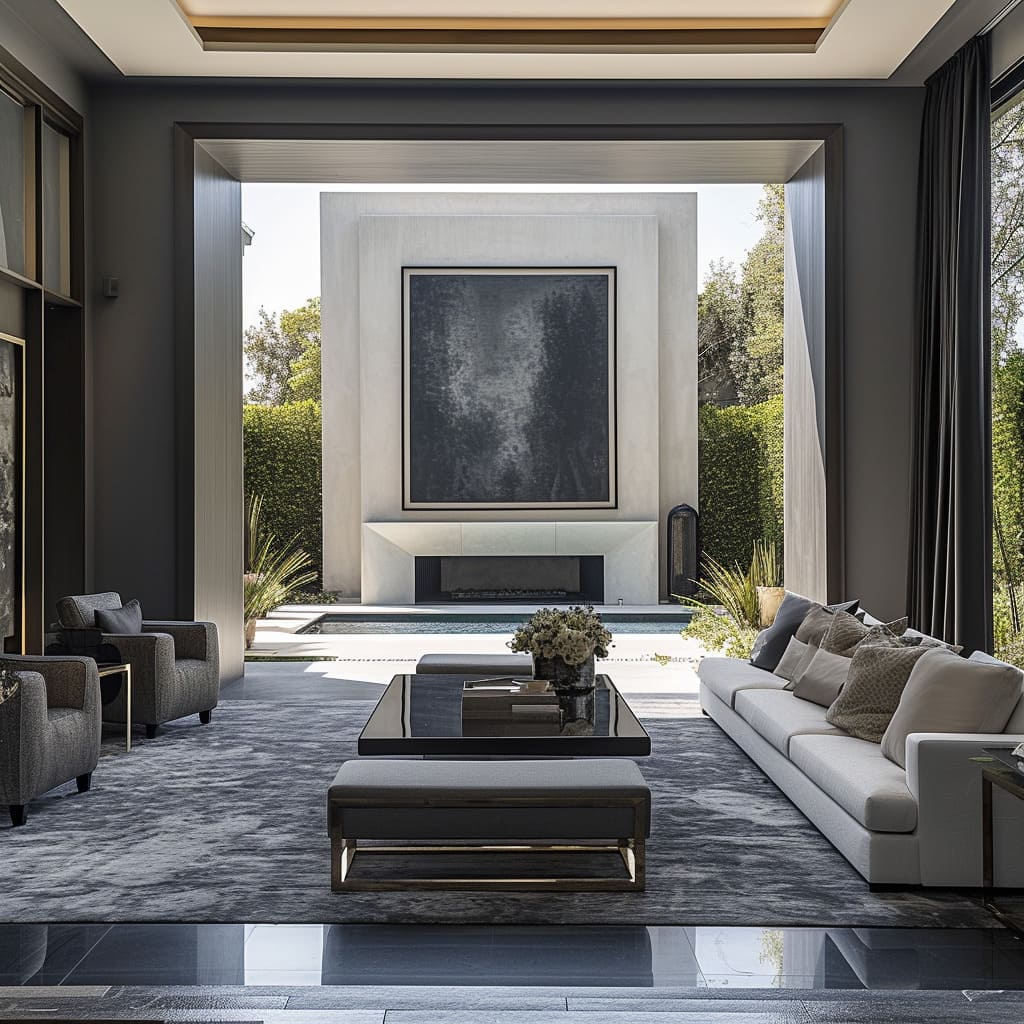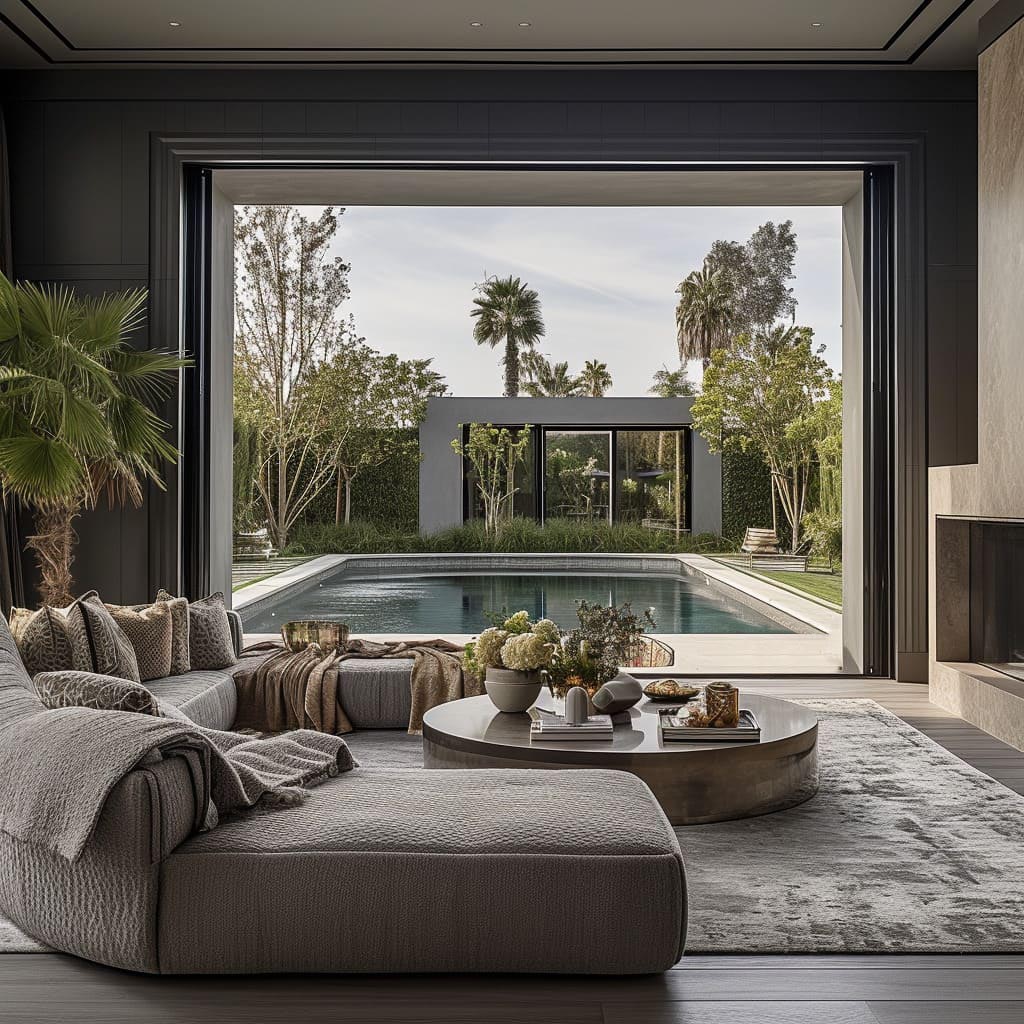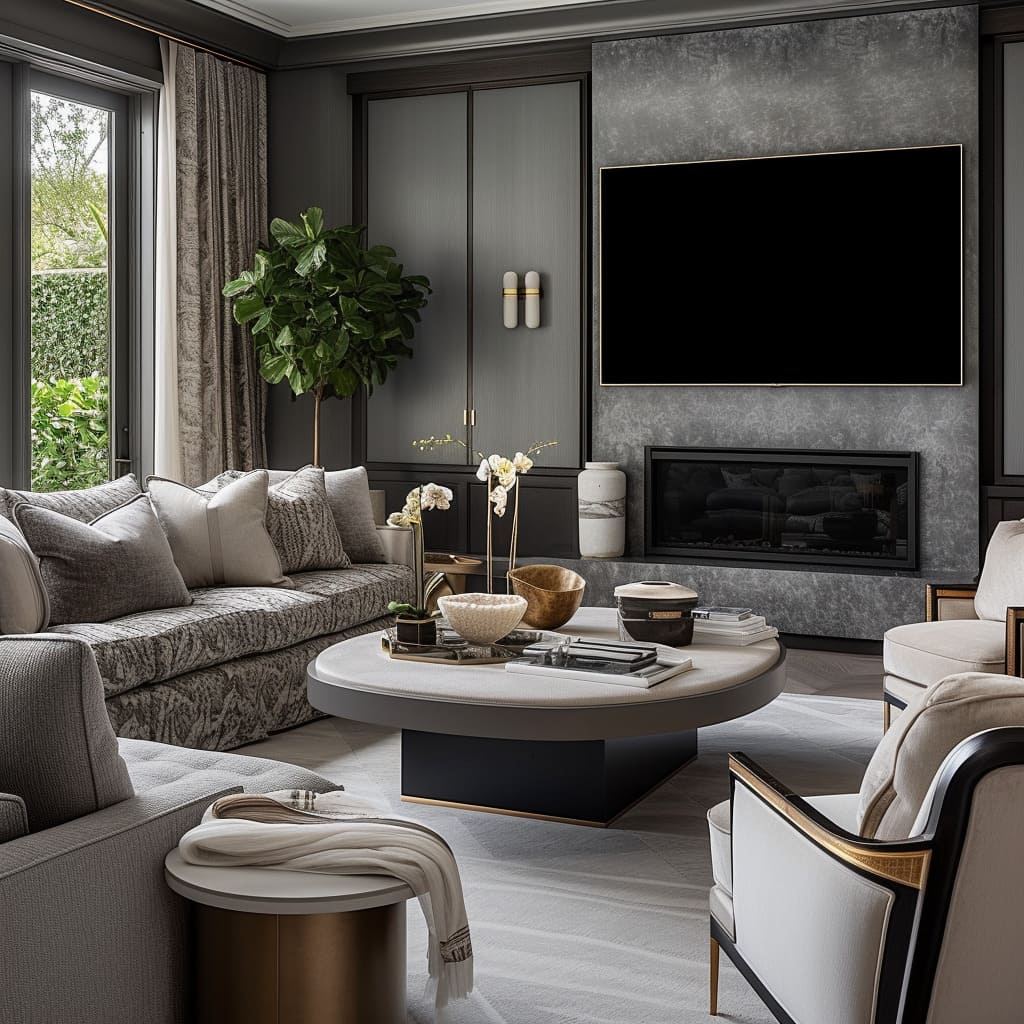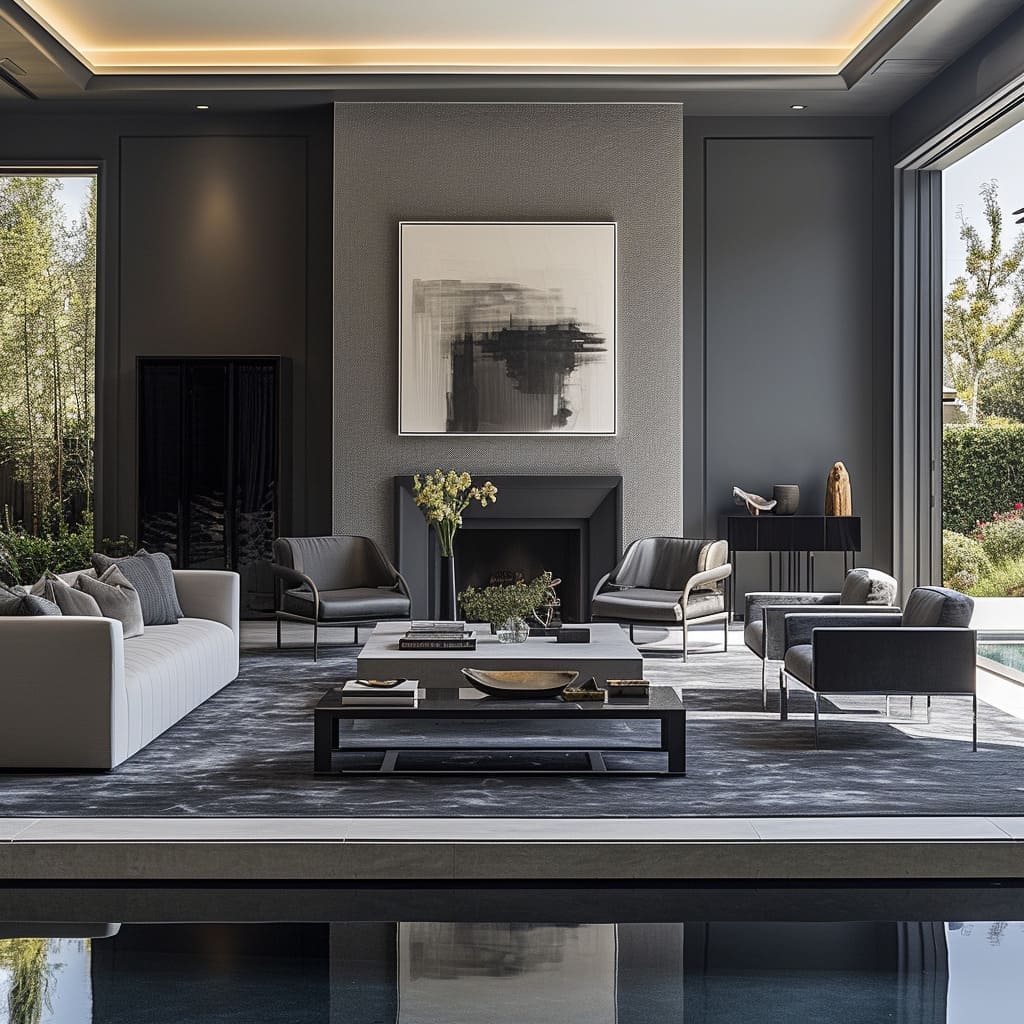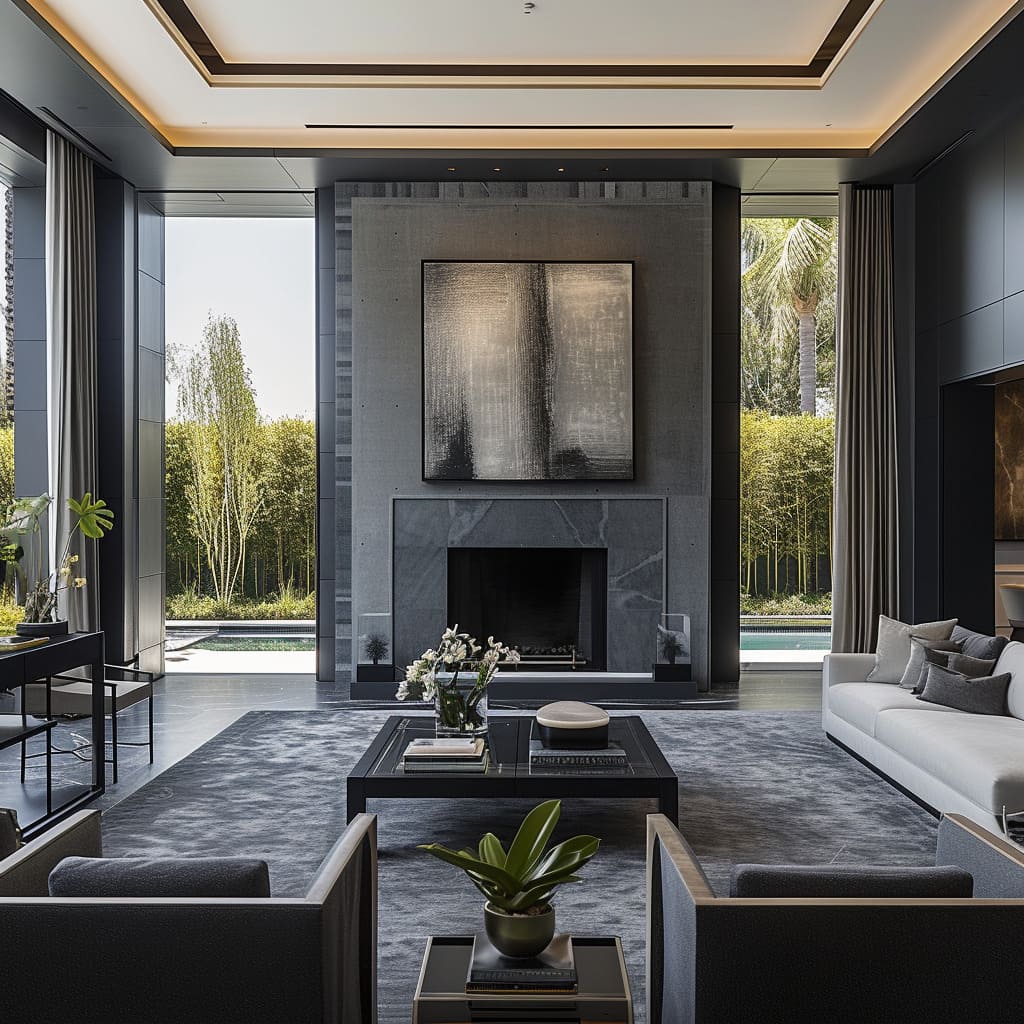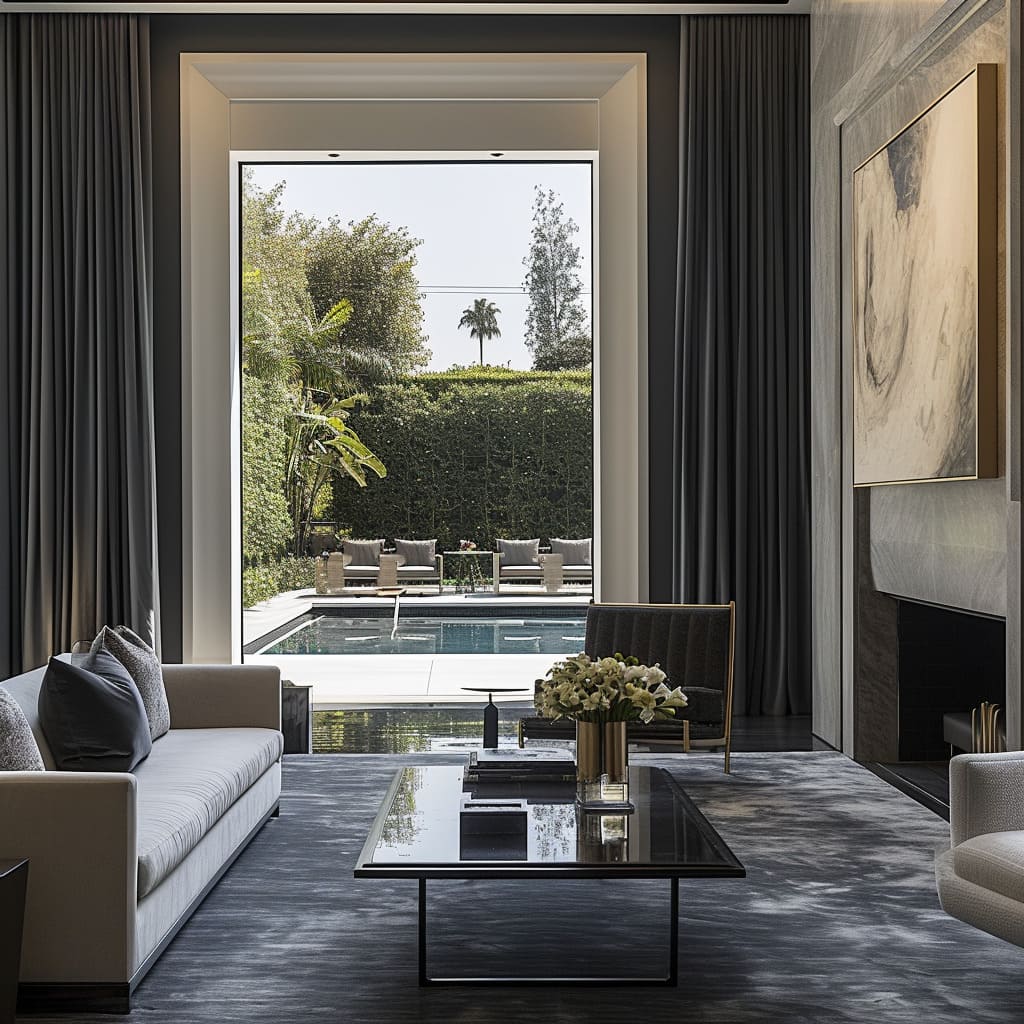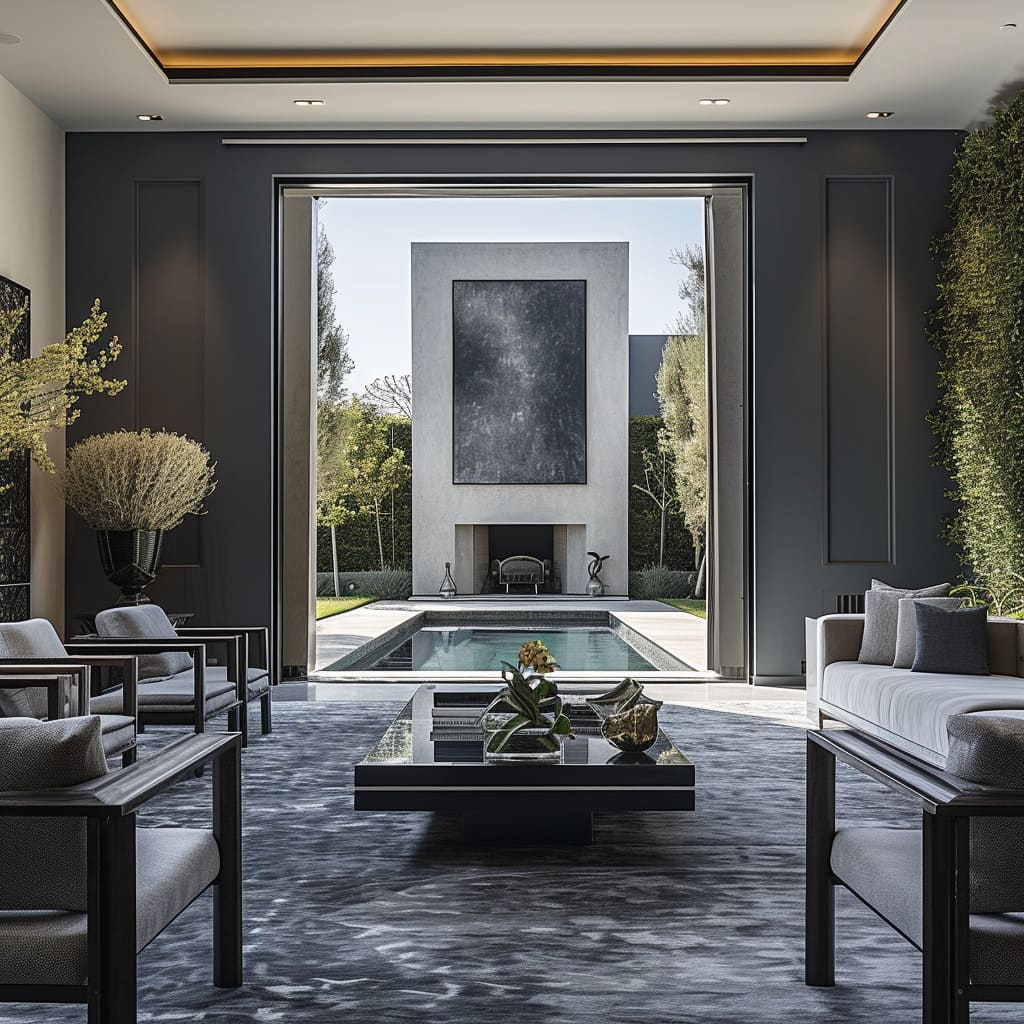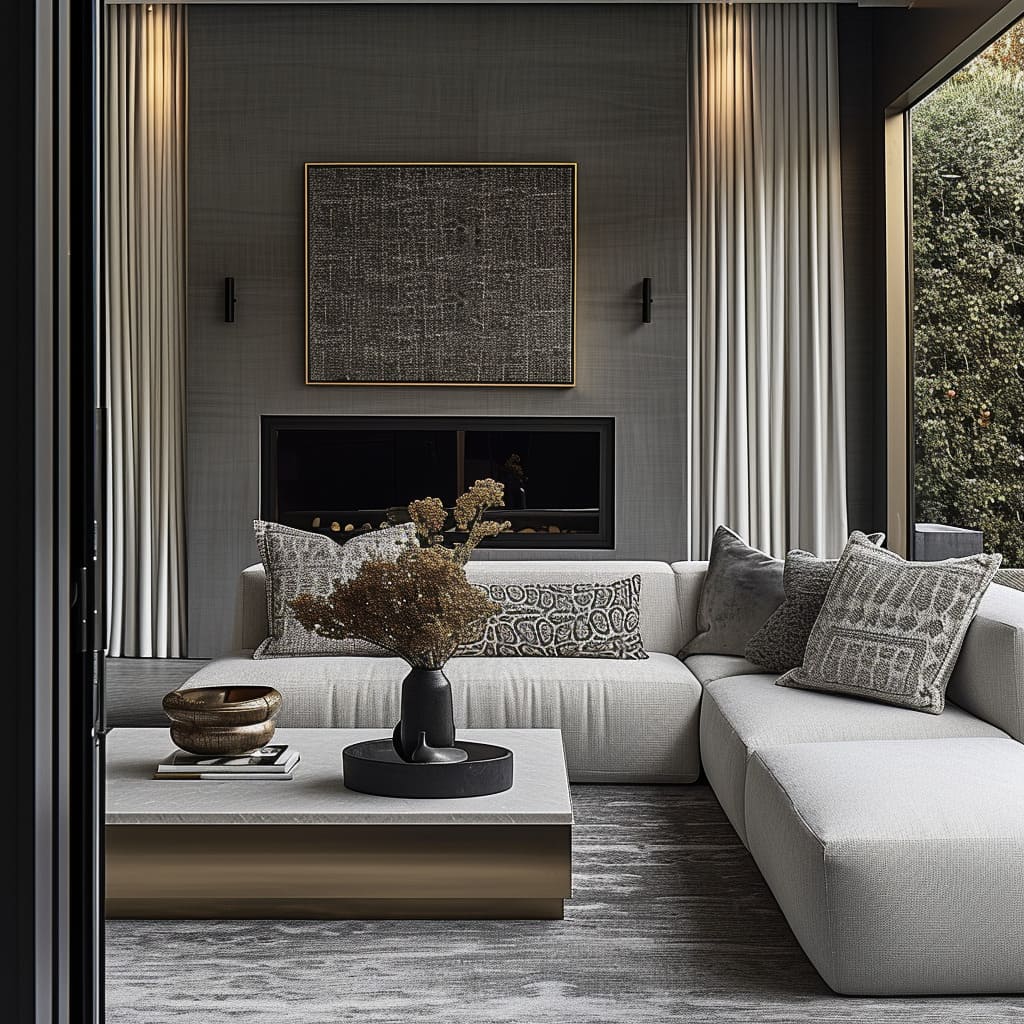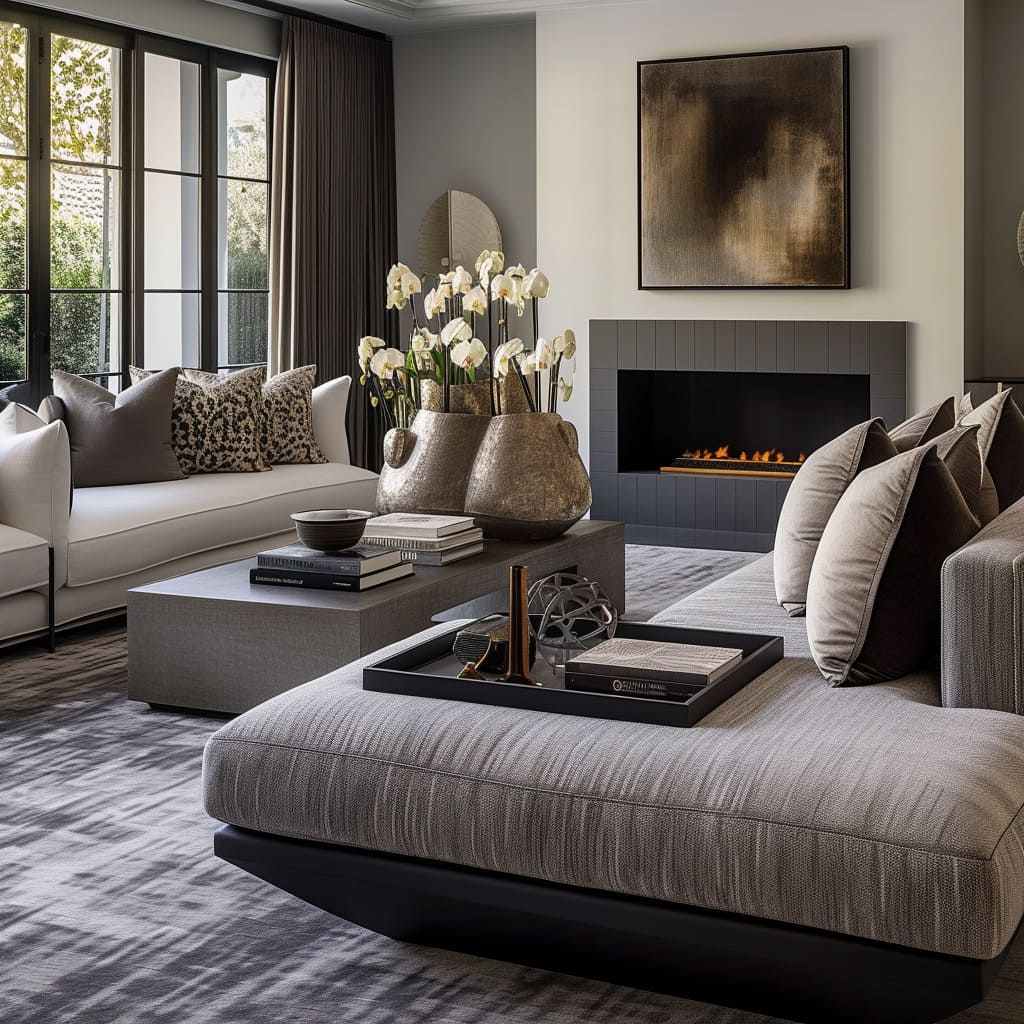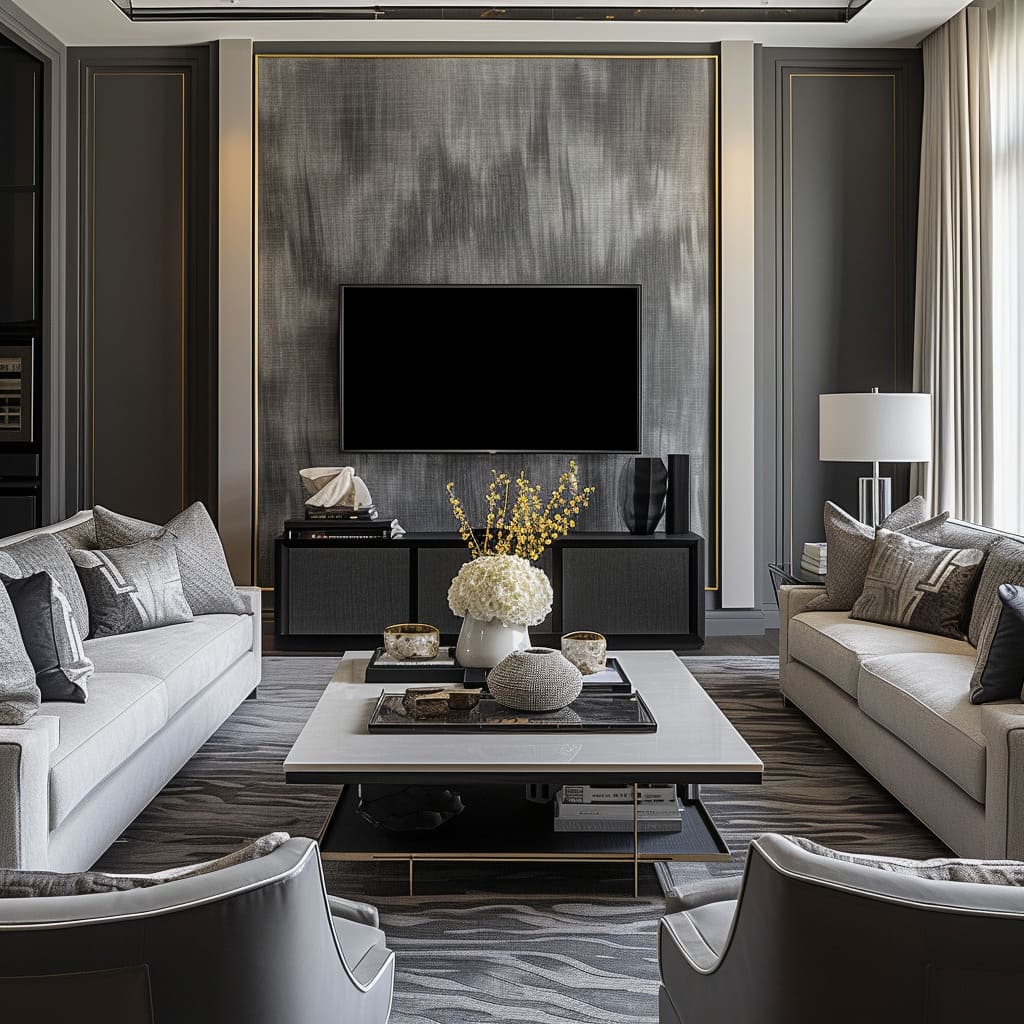This article delves into the world of interiors that masterfully blend minimalism with luxury, creating spaces that are not only aesthetically pleasing but also comfortably livable. We will explore how meticulous selection of materials, thoughtful furniture choices, and a harmonious color palette come together to form environments that are both inviting and elegantly modern.Join us as we uncover the principles that make these spaces a testament to the timeless beauty of minimalist design.
Modern Minimalism in Interior Design
Modern minimalist interior design focuses on simplicity and functionality, characterized by clean lines and a neutral color scheme. Furniture in this style is geometric, devoid of ornate details, emphasizing the principle that form follows function.Rooms commonly feature a grayscale palette, ranging from deep charcoals to light grays, offering a calm, neutral backdrop.
In minimalist spaces, clutter is minimal, with surfaces mostly clear and each object carefully chosen for its purpose and aesthetic. Textures are subtly incorporated through fabrics and wall treatments, adding depth while maintaining the color scheme.Decor serves not only as a visual delight but also fulfills functional needs, like sculptural lighting fixtures or multipurpose storage.
The layout of these spaces is open and uncluttered, promoting tranquility and a smooth flow of movement. Architectural elements, such as large windows and clean-lined fireplaces, become focal points in the absence of excessive decoration.Subtle contrasts in shades of gray define different areas and add visual interest.
Discover how innovation drives the aesthetics and functionality of contemporary architecture by reading our comprehensive overview.
Quality is preferred over quantity, with a selection of high-quality furniture and materials. Occasional muted colors, like the beige of throw pillows or the green of plants, add accents without overwhelming.Modern technology is integrated seamlessly, maintaining clean lines and an uncluttered look.
Natural light is a key component, with ample windows allowing light to enhance the openness. Reflective surfaces like glass and polished metals add to the spacious feel.Consistency in design across rooms creates a cohesive look, with furniture and decor proportioned to fit the space comfortably.
Artwork and accessories often feature geometric shapes, aligning with the minimalist theme. Despite the focus on style, comfort is not compromised; plush textiles and comfortable seating make these spaces both stylish and livable.The design emphasizes the luxury of space rather than an abundance of items, with accessories selected to complement the overall narrative.
Luxury Material Selection
Luxury interiors are defined by the choice of materials, each meticulously selected for their elegance and comfort. This approach results in spaces that are both sophisticated and inviting.Here’s a look at the materials that define luxury in interior design:
Marble, a symbol of opulence, is often used for fireplace surrounds and tabletops. Its unique veining adds natural beauty, and its polished surface enhances the room’s luminosity.Premium upholstery fabrics, including rich velvets, fine linens, and textured weaves, offer tactile comfort and add depth. They reflect a commitment to quality.
Metal accents, in brushed gold or stainless steel, add a contemporary flair and contrast beautifully with softer textures. High-quality wood in dark tones brings warmth, balancing the cooler marble and metal finishes.Glass surfaces, both clear and tinted, lend a sleek look and amplify the sense of space and luxury.
Other stone materials or engineered composites are also used, particularly for countertops and decorative objects, offering both style and durability. Designer textiles for cushions and throws often feature unique patterns or textures, showcasing skilled craftsmanship.
Leather, used sparingly for accent pieces, provides a smooth, supple touch and ages gracefully. Area rugs, likely hand-knotted or woven from natural fibers, add a plush feel underfoot and improve acoustics.
Textured wall coverings, such as silk, suede, or artisan plaster, transform walls into focal points. Artistic finishes in artwork and sculptures are chosen for their material quality, enhancing the luxury feel.Ceramics and porcelain items, noted for intricate glazes or hand-painting, add artistic flair.
Custom hardware on doors and cabinetry, often made from brass or other high-end metals, combines functionality with aesthetic appeal. Lighting fixtures, including chandeliers and lamps, are crafted from materials like crystal and hand-blown glass, chosen for their beauty and reflective qualities.
Even small decorative details, like inlays and moldings, are crafted from premium materials, enhancing furniture or architecture subtly. In outdoor spaces, the choice of materials for patio stones, pool tiles, and furniture reflects a commitment to both durability and design.
Window treatments are made from luxurious fabrics that drape elegantly, complementing the room’s aesthetic. Flooring materials, from marble tiles to engineered hardwood, are chosen for their quality and design compatibility.High-quality paints and finishes on walls and ceilings add a subtle luster, enhancing the overall look.
Architectural-grade glass is used for framing views, ensuring clarity and energy efficiency while maintaining a visual connection with the outdoors.
Contemporary Style Furniture
Contemporary furniture is key in these interior designs, perfectly balancing modern aesthetics with user comfort. The living areas are adorned with sleek, low-profile sectional sofas that embody a minimalist design.These sofas, notable for their clean lines, not only enhance the sense of open, uncluttered space but also invite relaxation and social interaction due to their generous proportions.
Central to the seating arrangements are geometric coffee tables in various shapes like rectangles or circles, serving as both functional surfaces and focal points. Despite the modern forms of the furniture, comfort is paramount, evident in the plush cushions and soft fabrics that encourage relaxation.
Each space often features unique armchairs, adding character through their distinctive designs, whether curved or angular. The furniture generally adheres to a neutral color palette, reinforcing a modern and sophisticated ambiance and allowing for easy accessorization.
A mix of materials is also a hallmark of these designs, where soft fabrics contrast with harder elements like metal or glass, adding tactile and visual diversity. Some furniture pieces are modular, offering versatility and adaptability to different needs and occasions.
The minimalist approach is evident in the furniture, focusing on form and material without unnecessary embellishments. Certain pieces double as functional art, boasting sculptural elements that are visually striking while serving practical purposes.
Contemporary design extends to integrated technology, with televisions and sound systems blending seamlessly into the overall aesthetic of the room. Lighting fixtures, both overhead and freestanding, contribute to the contemporary vibe with artistic designs, serving as illumination and decor.
Accent chairs placed strategically in corners or alongside windows offer personalized comfort, often made from high-quality materials and featuring ergonomic design. The contemporary style is carried into outdoor spaces, ensuring a seamless transition between indoors and outdoors.
Area rugs under the furniture anchor and warm up the space, often featuring patterns or hues that complement the contemporary theme. Tables and consoles are multifunctional, serving as both decorative display areas and smart storage solutions while maintaining a sleek appearance.
The use of metal in furniture frames and legs adds an industrial touch, contrasting with the soft interiors. Some pieces may result from collaborations with renowned designers, adding exclusivity and high design value.Integrated storage in contemporary furniture helps maintain a clutter-free and stylish look.
Accent pillows are used to add color and texture, offering an easy way to refresh the room’s appearance. The proportions of each furniture piece are carefully considered to ensure a balanced and harmonious space.
In summary, contemporary furniture in these designs exemplifies the successful fusion of modern design principles with functional, comfortable living. These pieces are chosen for both their aesthetic appeal and their ability to create inviting, usable spaces that cater to daily life while adding a sense of refined luxury.
Conclusion: The Essence of Contemporary Minimalist Design
In these interiors, minimalism is celebrated not by the absence of details, but through the careful selection and placement of each element, creating spaces that are both spacious and welcoming. The minimalist aesthetic shines through clean lines defining both architecture and furnishings.The focus is on the intrinsic quality of materials and precise design, avoiding excessive decoration. Neutral color palettes of grays and beiges are accentuated with touches of deep black or pure white, crafting a serene and balanced ambiance.
The use of luxurious materials, particularly marble, adds a layer of sophistication and richness. Marble’s cool tactile presence and unique veining introduce a distinct artistry in fireplaces and tabletops.Fine textiles like velvet and silk balance the harder surfaces, offering visual and physical warmth. These materials, featured in upholstery and window treatments, underscore the spaces’ opulence.
Furniture selection is key, with contemporary pieces showcasing sleek, often geometric designs that reflect modern craftsmanship and design principles. Despite their style-forward appearance, these pieces prioritize comfort, inviting relaxation and social interaction.The furniture, substantial yet airy due to its design and strategic placement, enhances each room’s feel.
A consistent design theme across these spaces is evident, manifesting in the harmonious selection of color schemes, materials, and furniture styles. This consistency not only creates a unified aesthetic but also imbues the home with a sense of harmony and tranquility.
In summary, these interior designs exemplify a triumph in contemporary style, beautifully illustrating the allure of minimalism, the elegance of high-quality materials, and the comfort of modern furniture. The cohesive theme throughout the property is a testament to a deliberate and thoughtful design process, aiming to cultivate a tranquil and luxurious living environment.



